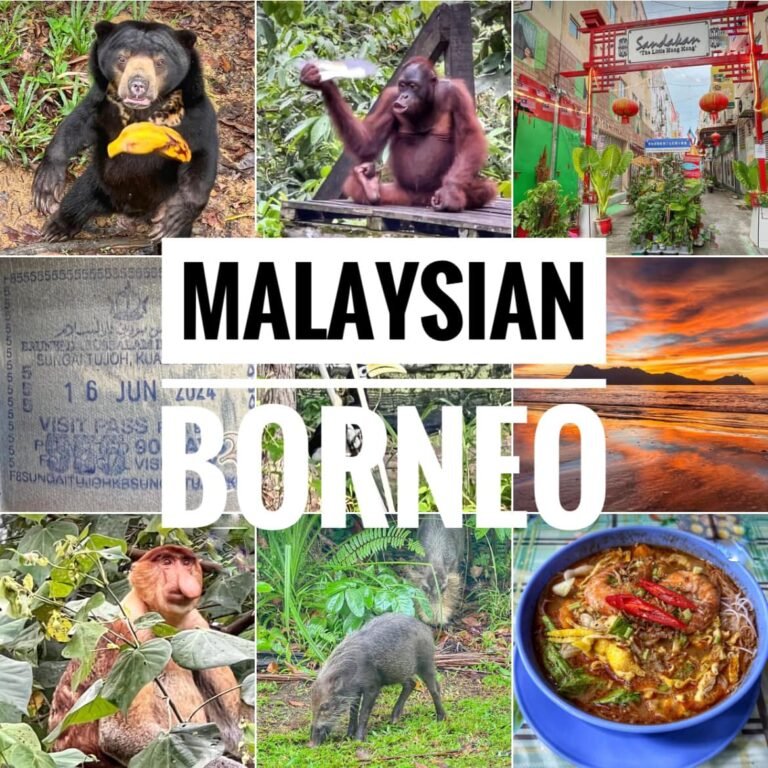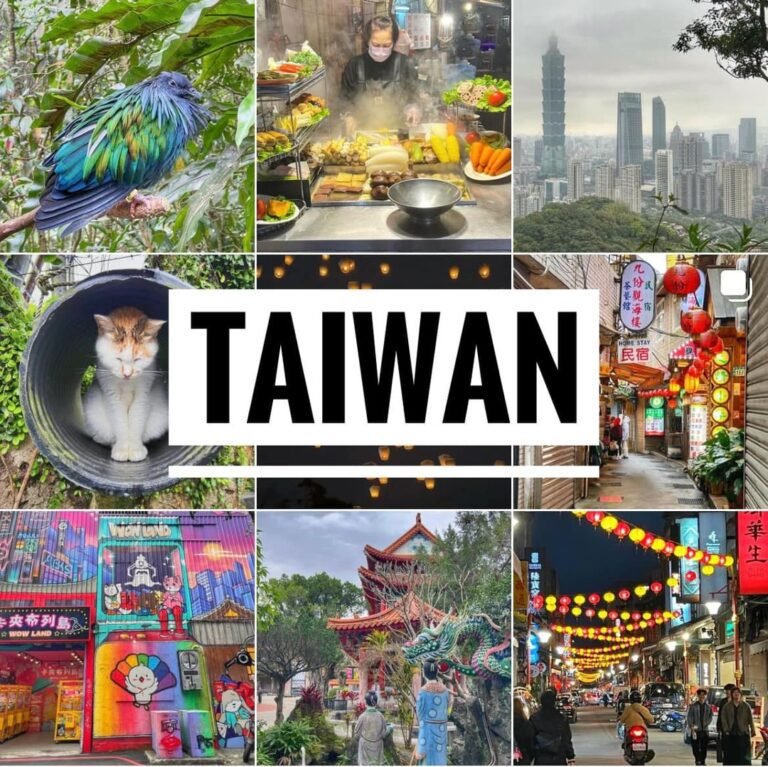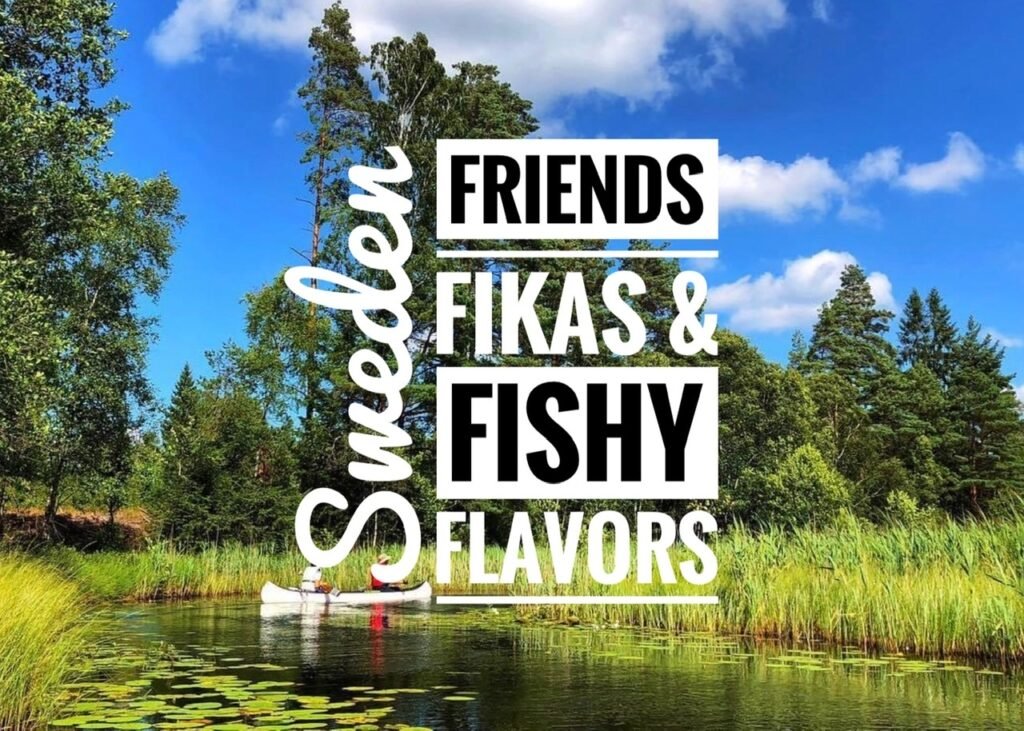
When we left in July 2018, we thought our “world trip” was going to be a two year and done situation. And, the hospitality bar was set extremely high right off the bat when we opened up our trip by staying with the amazing Ek family in Kullavik, Sweden, about an hour southwest of Gothenburg.
The Eks, whom Mandy knew well from a previous job, went over the top by preparing our room with a little Swedish flag and sweet treats, (some of them shockingly zingy!), taking us sightseeing, kayaking and exploring, and feeding us some gloriously good Swedish home-cooked eats, whipped up by our very own Swedish mama, Tina.
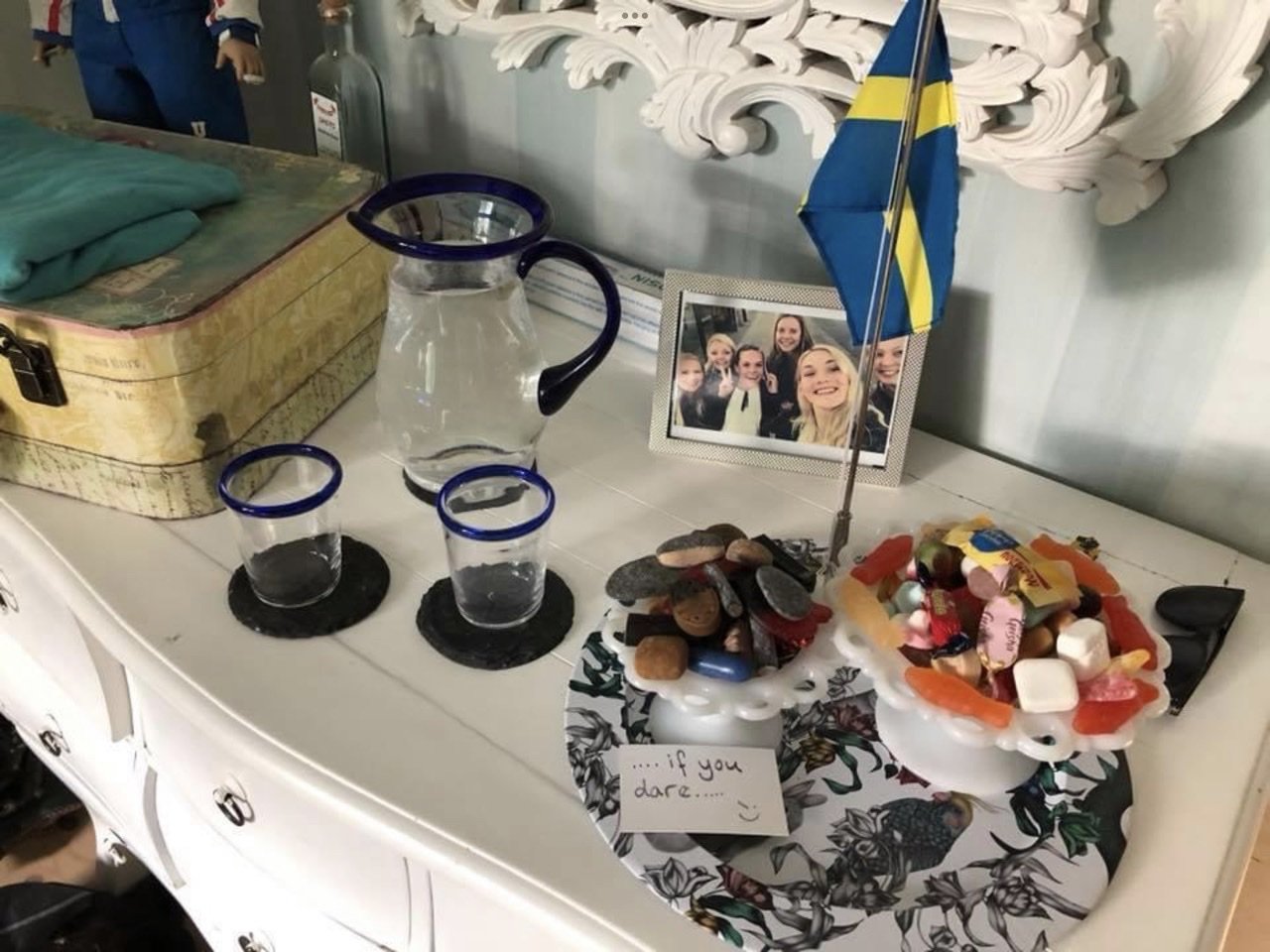
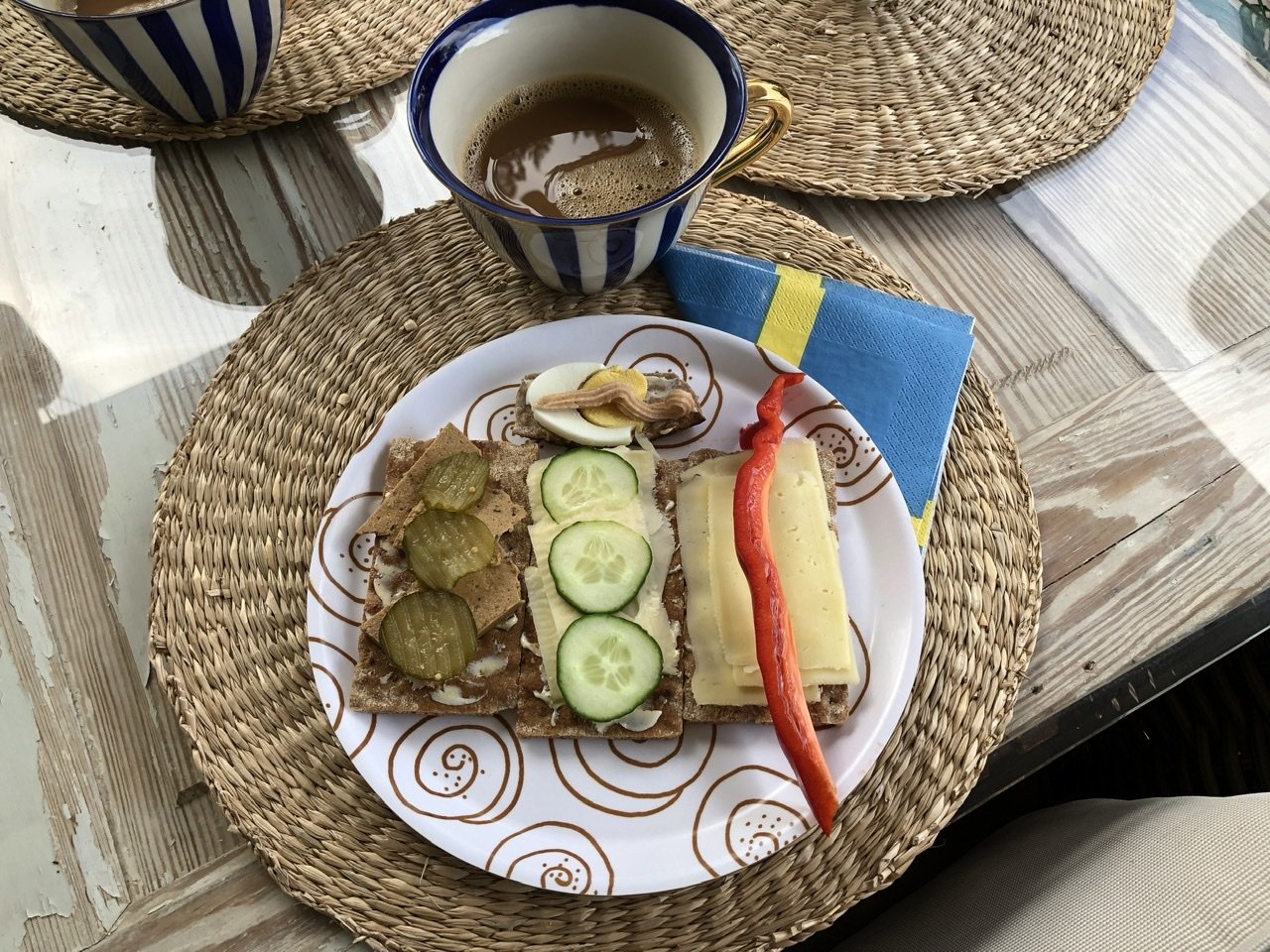
Swedish Hospitality & Food
Before this visit, we never once said, “Mmmm…I really want some Swedish food for dinner/lunch.” But now, we still talk about those shrimp sandwiches and vegetarian Swedish meatballs! We love this family and are so thankful they opened up their home to us! It was a fantastic experience.
After arriving to Gothenburg on an overnight flight from Iceland, we took a quick shower and power nap before Tina and Anders welcomed us to the table with some much-desired coffee and a sampling of open-faced sandwiches. (Because in Sweden, two pieces of bread is smartly far too excessive!) A couple of them had some mystifying-looking pasty stuff smeared on it, which definitely appeared to have come squished from a tube based on its squiggly shape. Not knowing for sure what kind of adventurous stomachs she was dealing with, Tina made us taste it before telling it was caviar paste. It was…not bad.

Other foods that come in tubes in Sweden includes cheeses, fish and meat pates, anchovy pastes and creamed herbs. It was a whole different way of food packaging we’d never seen!
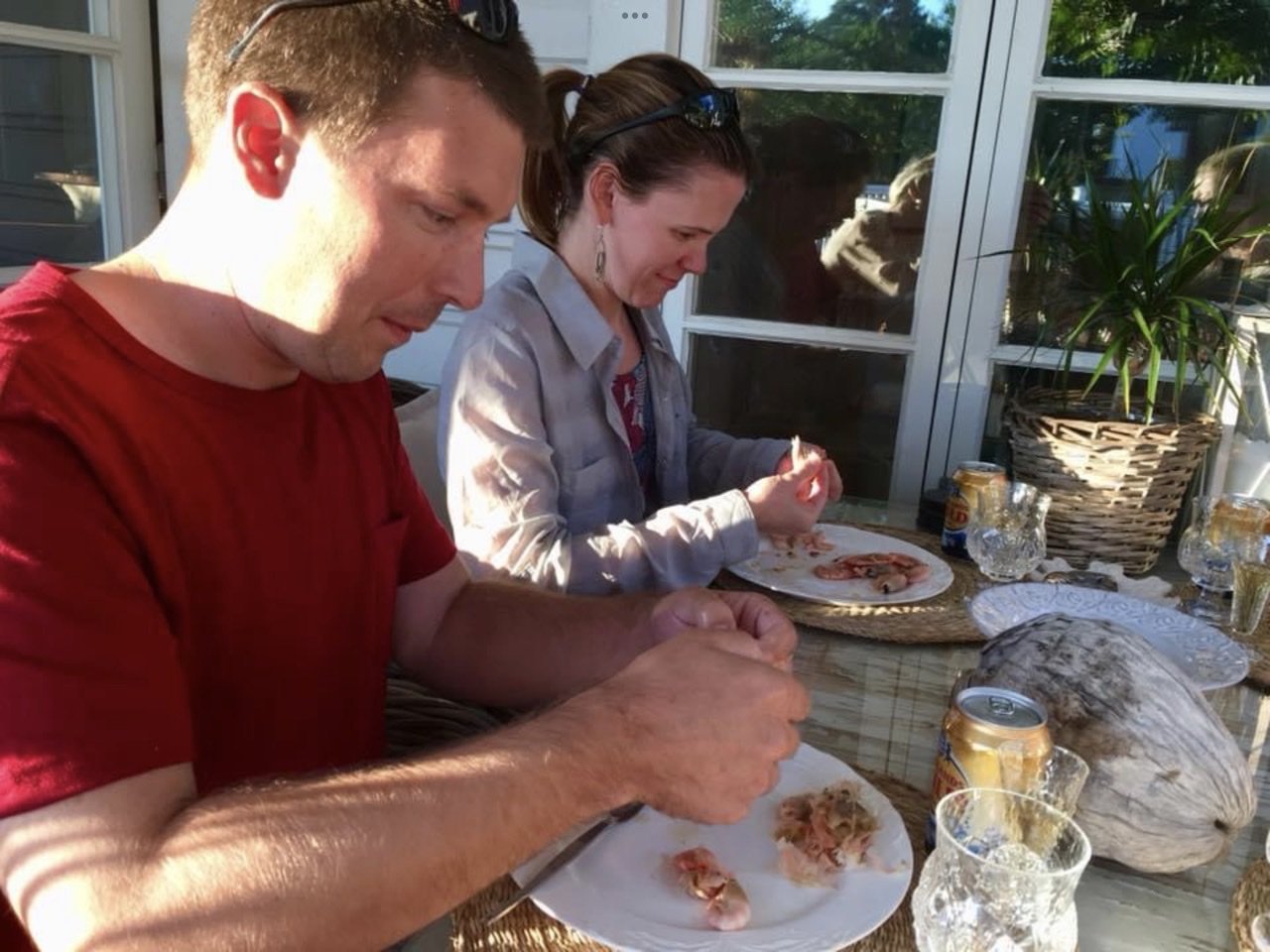
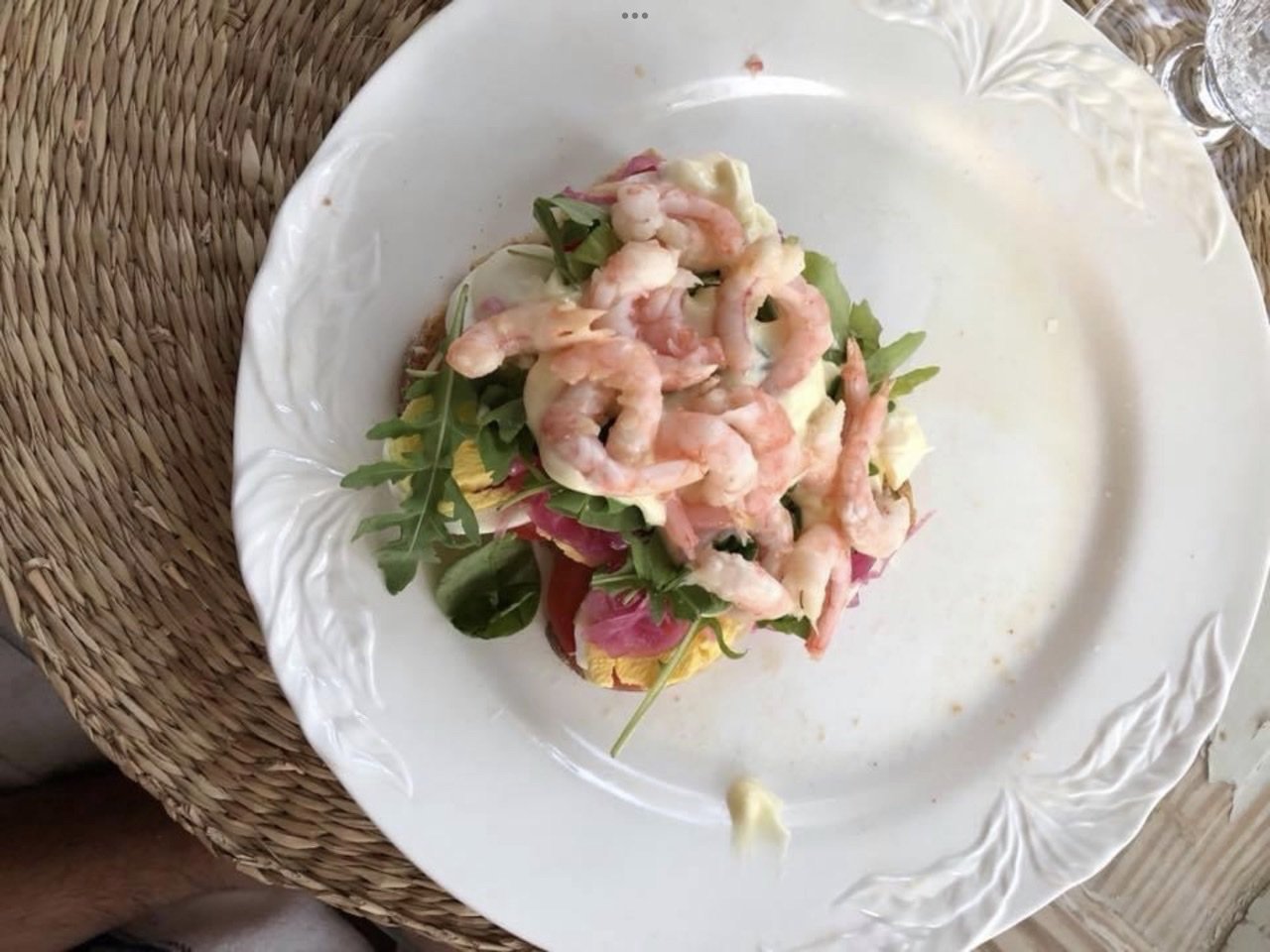
Of course, now that we’d passed our introductory food test, Tina was eager to send other Swedible concoctions our way. We told her to bring it on because we’re always ready to try new foods. And, she also put us to work by having us peeling and shelling our own shrimp and crayfish. We quickly learned that, in Sweden, sometimes eating is a lot of work!
This of course, was so we could assemble our own masterpieces. The traditional open-face shrimp (sometimes crayfish) sandwich, ended up being Mandy’s fav and we had three, in fact! The shrimp were simply divine, not the least bit rubbery, not too “fishy” and served with a cheese spread, onions, boiled eggs, mayo, tomato and arugula.

It’s also quite difficult to fit in your mouth once you do finish assembling it!! Take that quarter pounder with cheese. Look what my jaw can do!

A grand display of critters. So what exactly are you supposed to do with all this (other than make sandwiches!?)
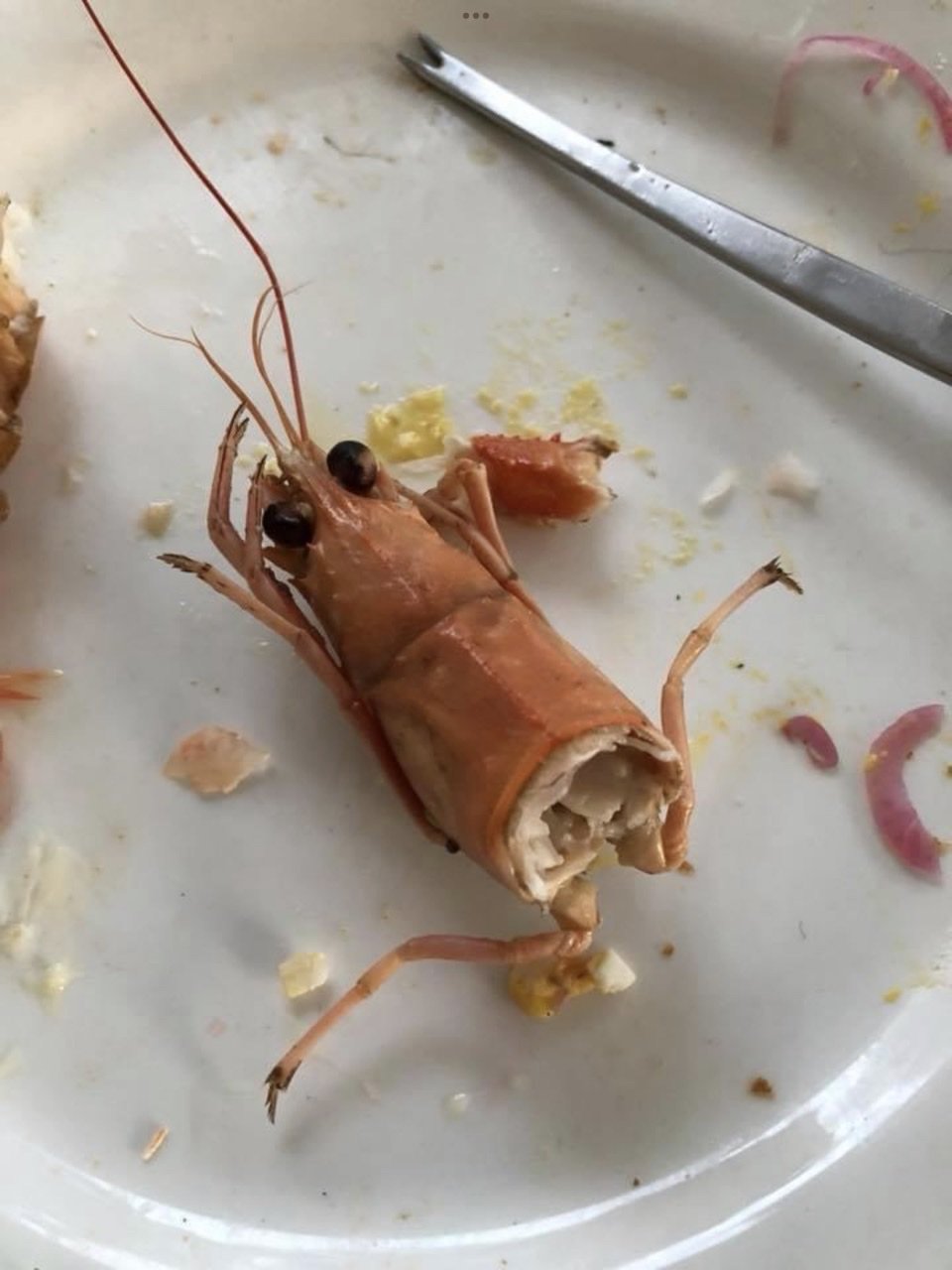
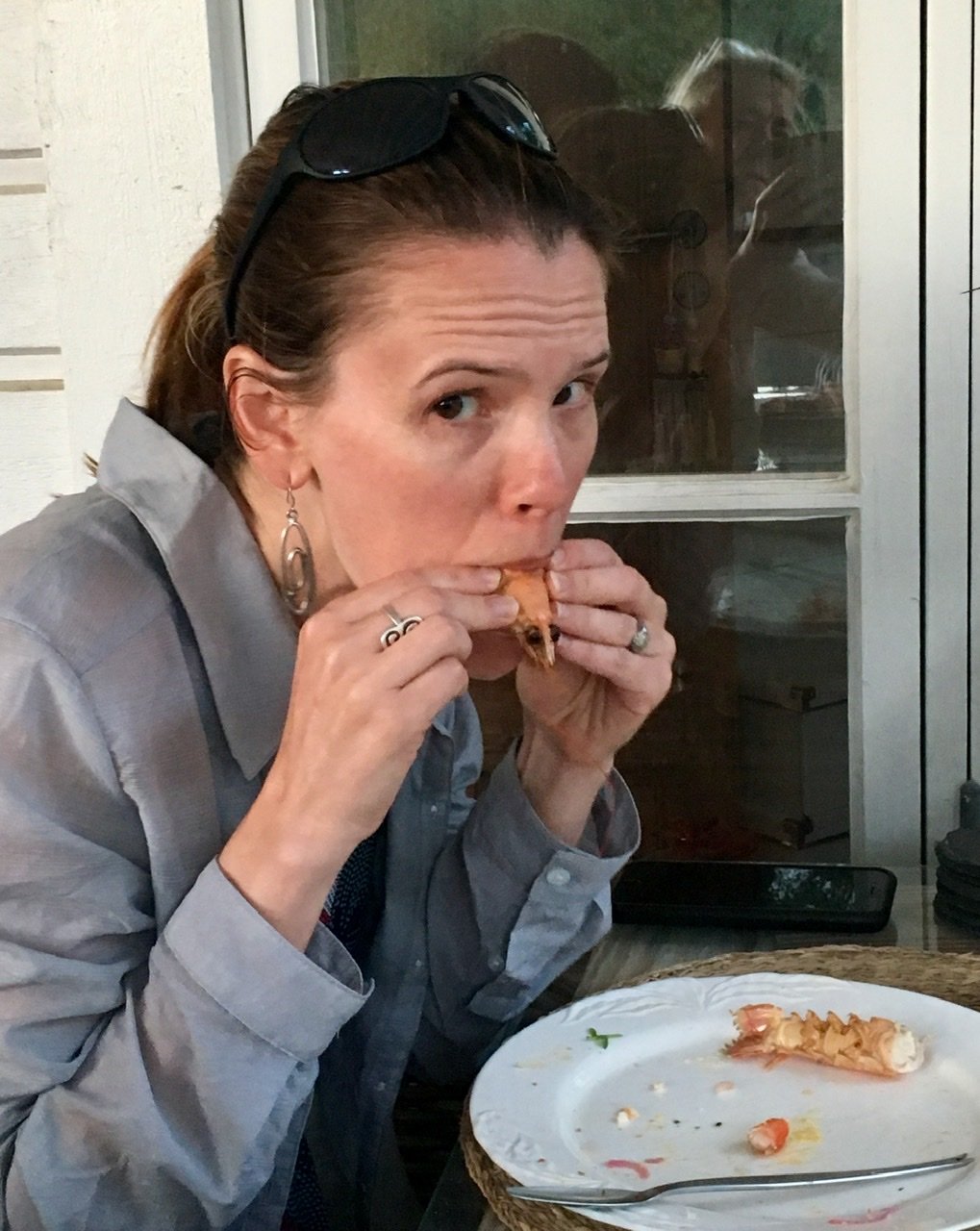
Well, apparently, we also don’t waste food in Sweden. So, some bites were slightly less tasty, and more… challenging to bring to your lips like crayfish heads. But one of us, at least, ate it while Greg just made nauseated faces. And by “eating” Tina demonstrated you had to slurp and suck out “whatever” was inside the head. At least Tina did make us eat the beady little eyeballs staring back at us…
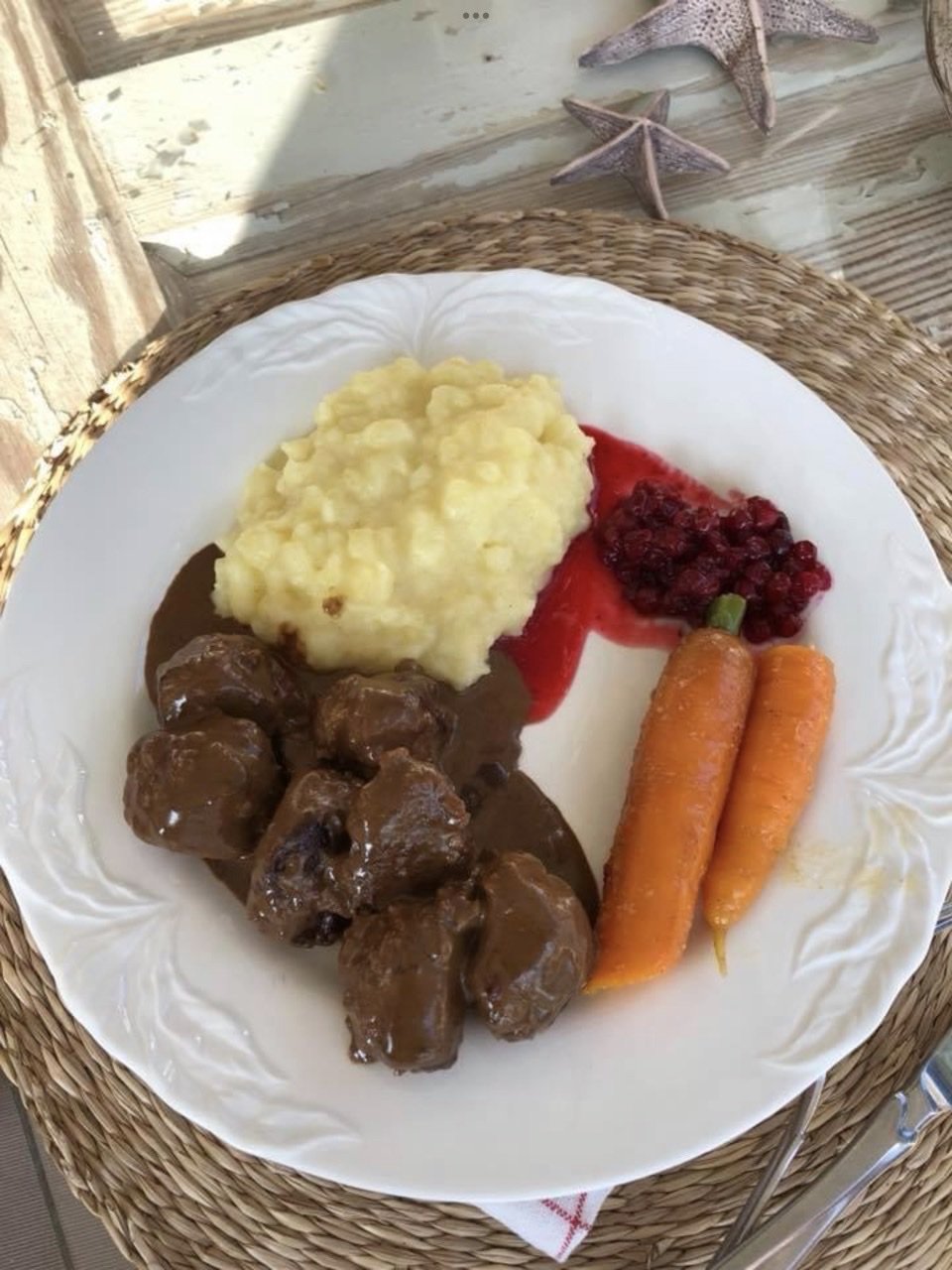
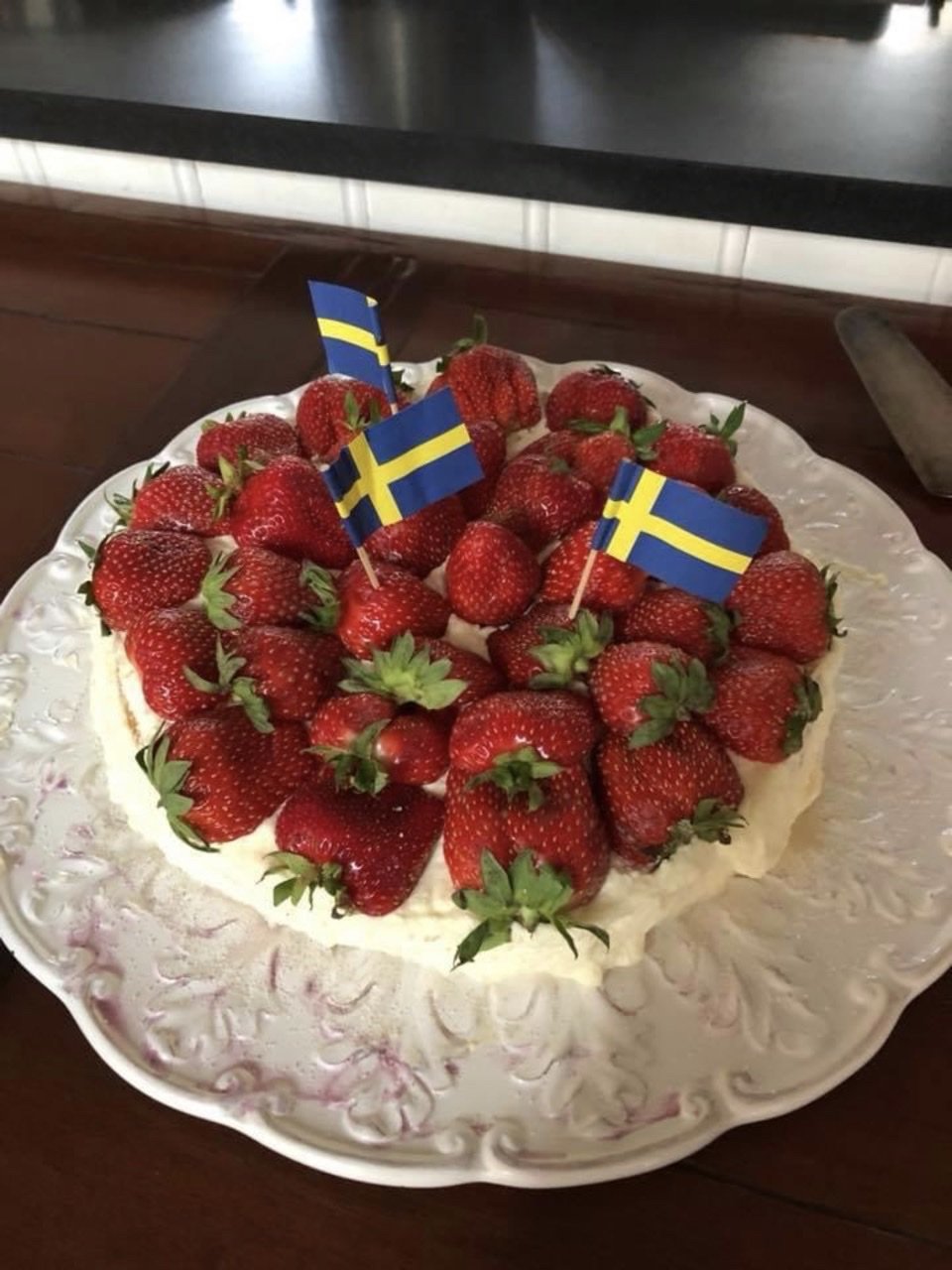

Thankfully, not all our food was staring at us. Everyone knows this dish. The quintessential Swedish meatballs, remarkably made vegetarian, with lingonberries and veggies on the side. (Sooooo good! The IKEA meatballs we’ve had don’t even come slightly close to being this yummy!) This was undoubtedly Greg’s favorite dish redeemed any doubts he had of Tina by going straight to his stomach…and his heart!
And of course, Tina won us both over with this. A strawberry cake dessert, sans caviar paste or crayfish, and instead adorned with the flag. Swedish flags feature a Nordic cross like other Scandinavian countries which traditionally represents Christianity. The design and colors of the Swedish flag are believed to have been inspired by the present coat of arms of Sweden of 1442, which is blue divided quarterly by a cross pattée of gold, and modeled on the Danish flag. Blue and yellow have been used as Swedish colors at least since King Magnus III’s royal coat of arms of 1275. (Wikipedia)
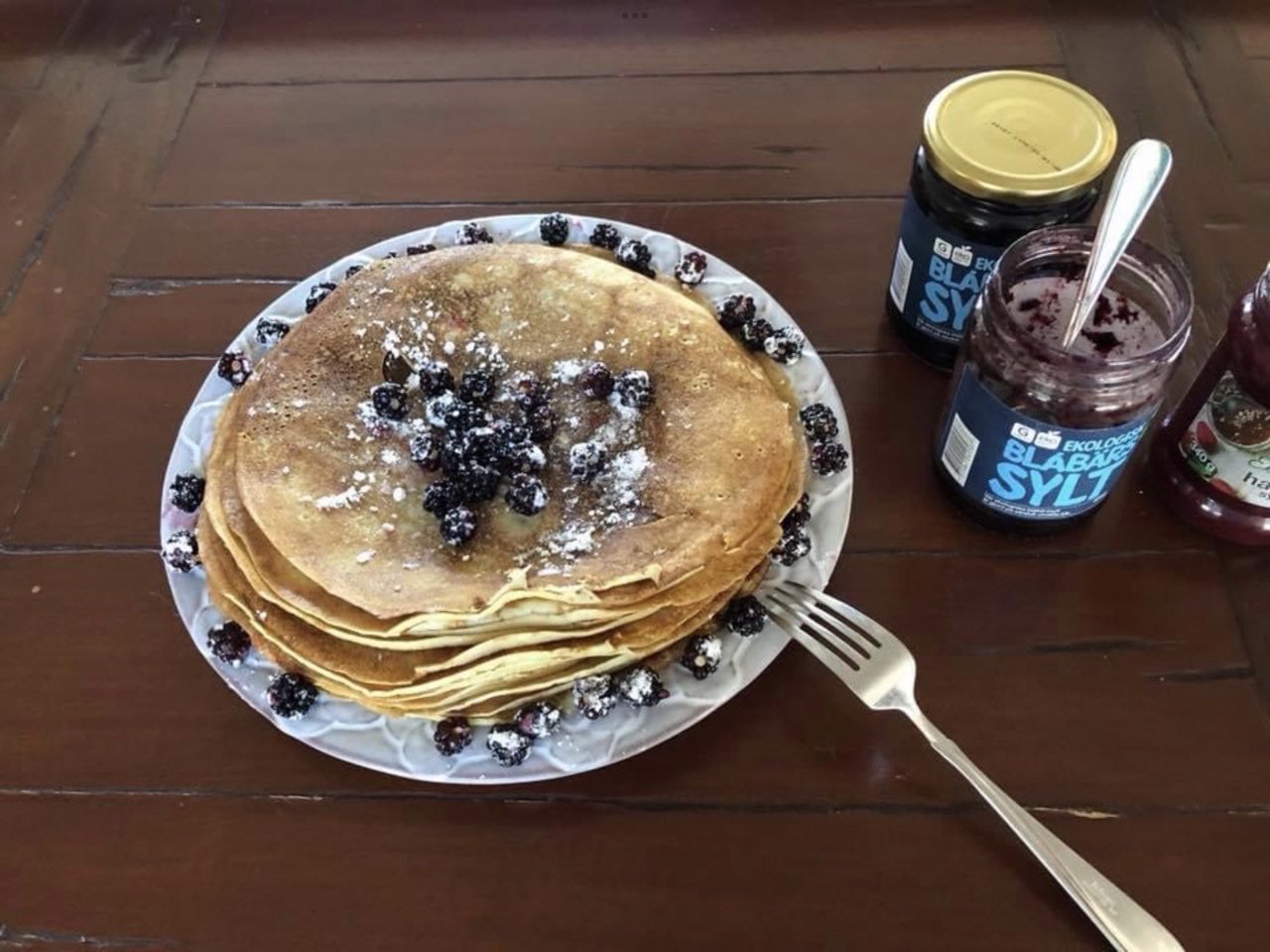
Swedish pancakes. Served with cream, jam, and rolled up like a crepe.
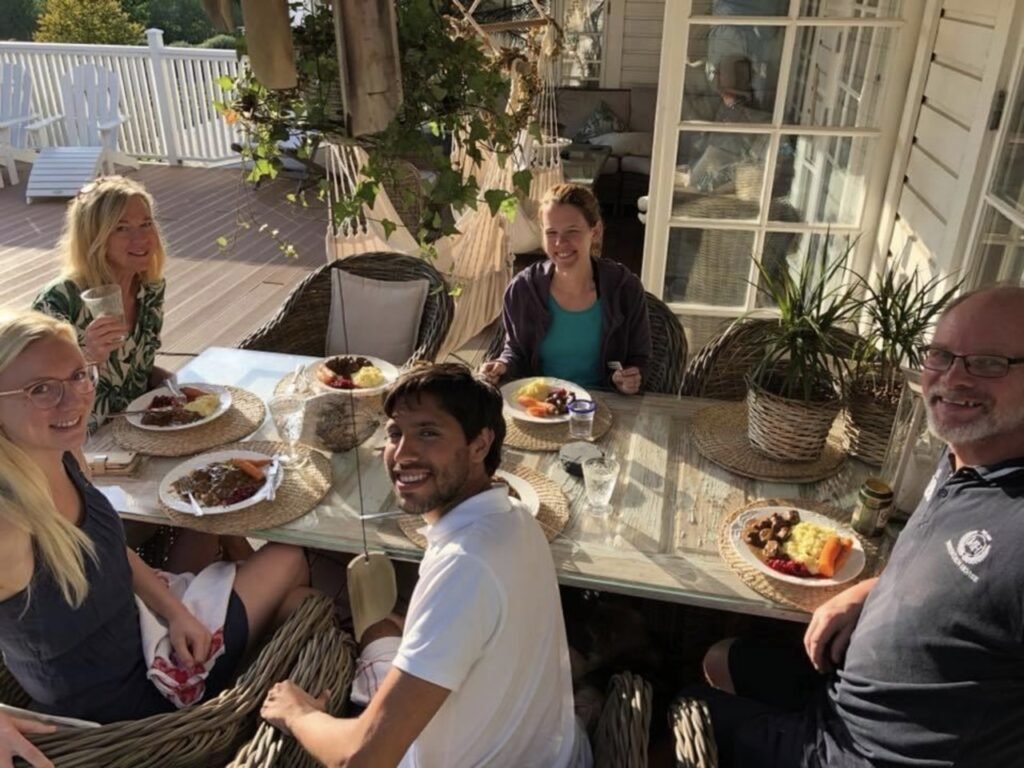
Around the Ek family dinner table. It’s apparently “Swedish law” (or maybe Tina’s?) that if the temperature outside is over 12 degrees Celsius, you “must” eat outside in Sweden.
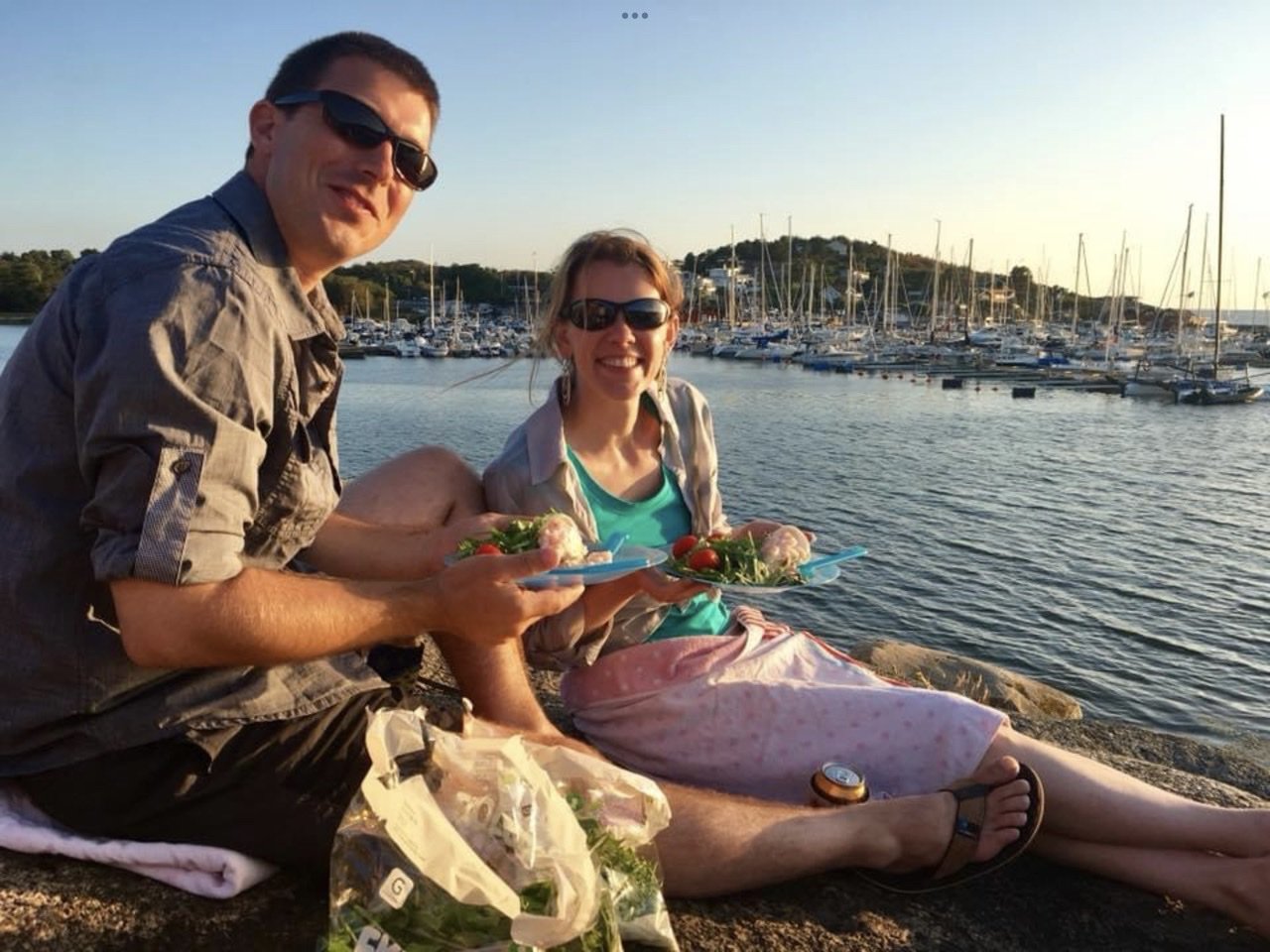

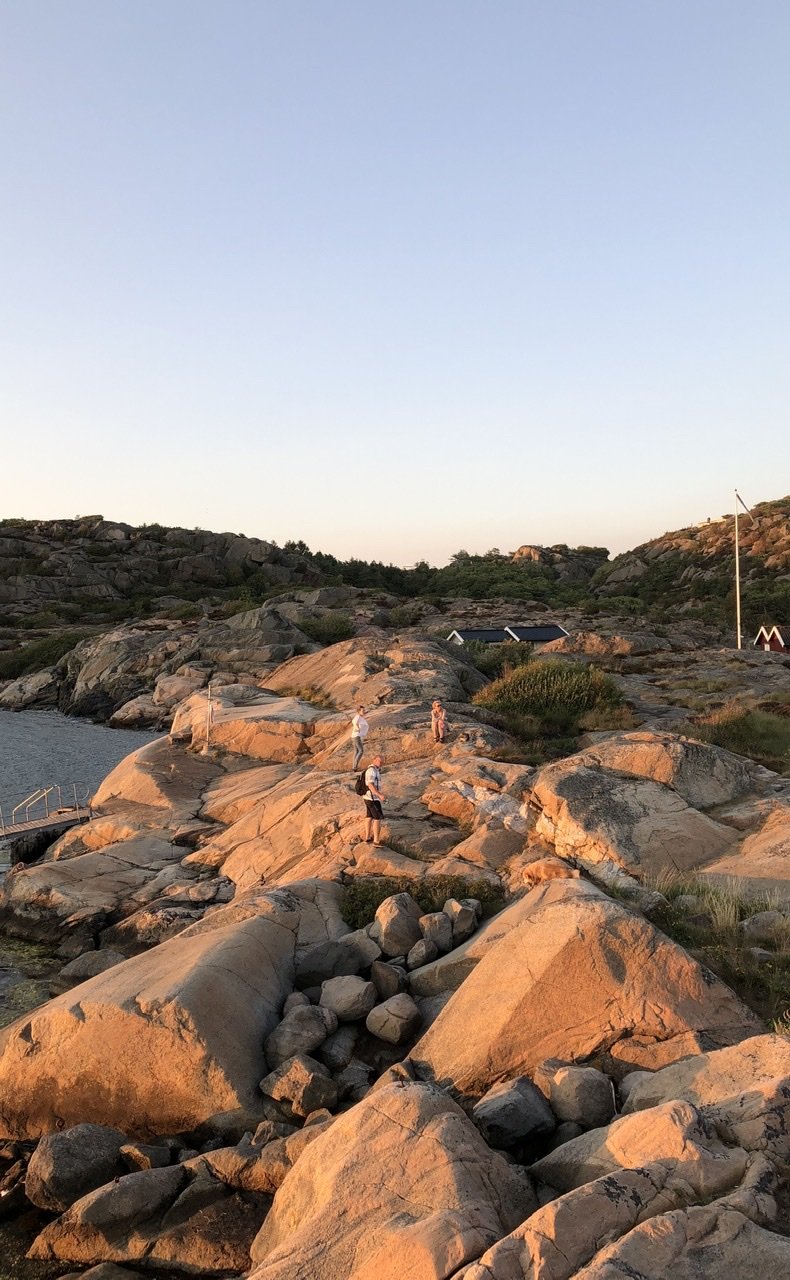
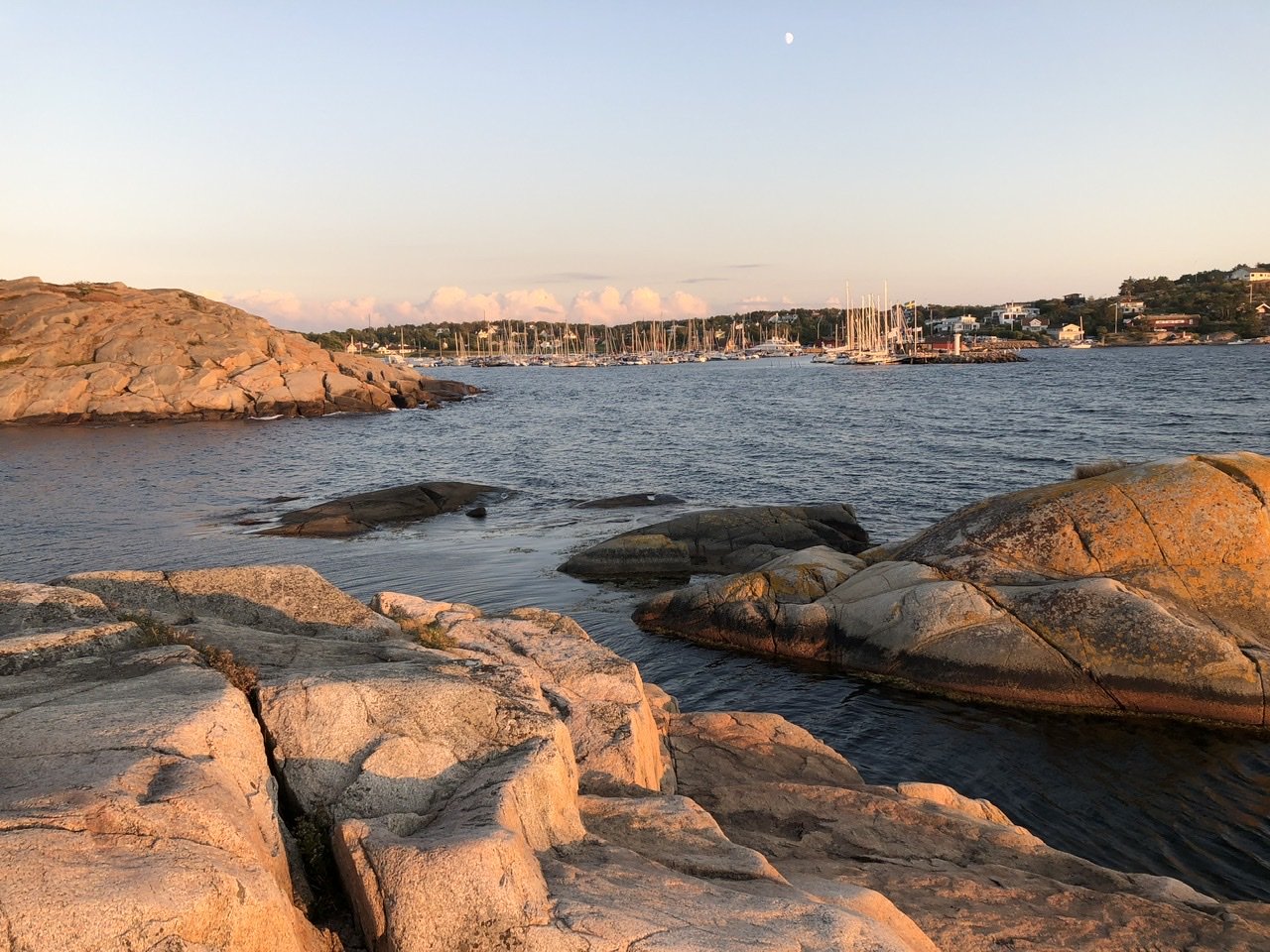
But eating outside does not have to be limited to the table. In fact, at least a couple of nights, Anders and Tina guided us down to their favorite rocks for a sunset picnic, which was at about 10 pm thanks to the summer sun. It was a simple pleasure they loved and we were so happy to share it with them.
It was a lovely 15-minute walk from their house to the water’s edge. One night Greg even plunged into the North Sea from a jumping rock, which we couldn’t believe we were able to do at any time of year…even July, this far north! Apparently, summer 2018 was quite a hot summer and although not so good for Mother Earth, it was wonderful to take advantage of the more pleasant water temperatures.
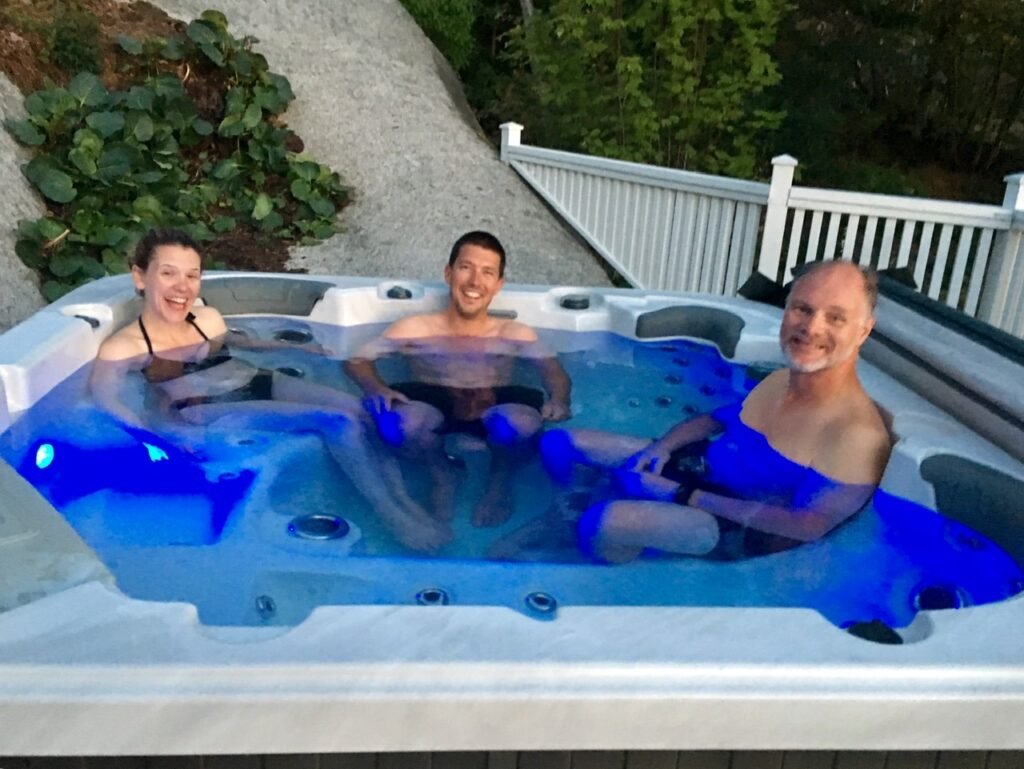
Especially these water temperatures!

And when we weren’t hot tubing, we were watching happy memories. Mandy used to work closely with the Ek Family as an Activities Director at a club in North Carolina and she brought a DVD of a Christmas performance she’d done with them in 2003. It was very special for all of us to watch it together, especially considering their daughters, Olivia and Julia, had starring roles.
Gothenburg

Gothenburg, on the west coast of the country, is Sweden’s second biggest city and serves as a very important seaport. The city is known for Dutch-style canals, and leafy boulevards, but we were most interested in soaking in those red roof-tops. After a nine-year hiatus, we had been having withdrawals.
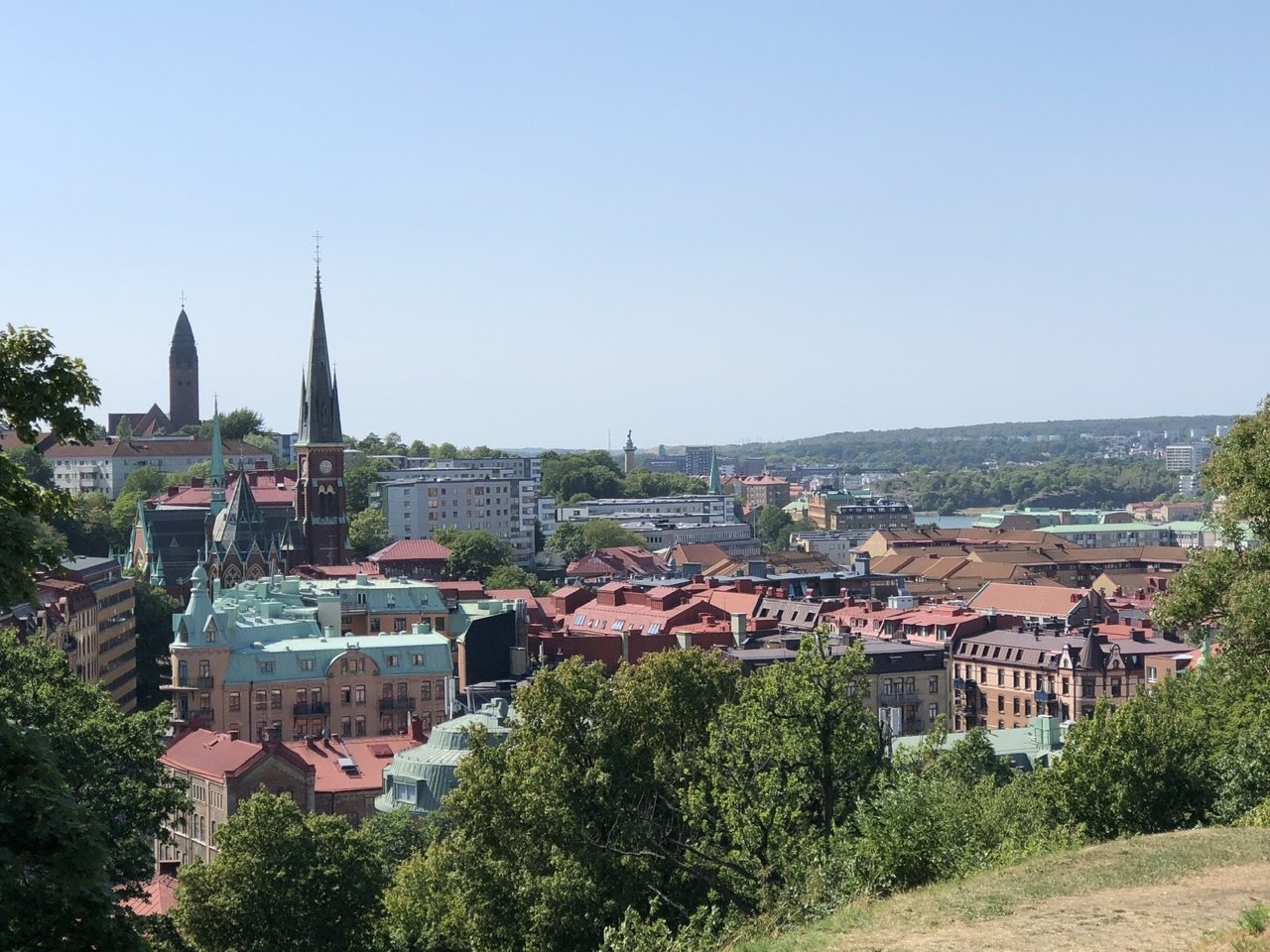

Plus, it was so nice to have tour guides for the visit!
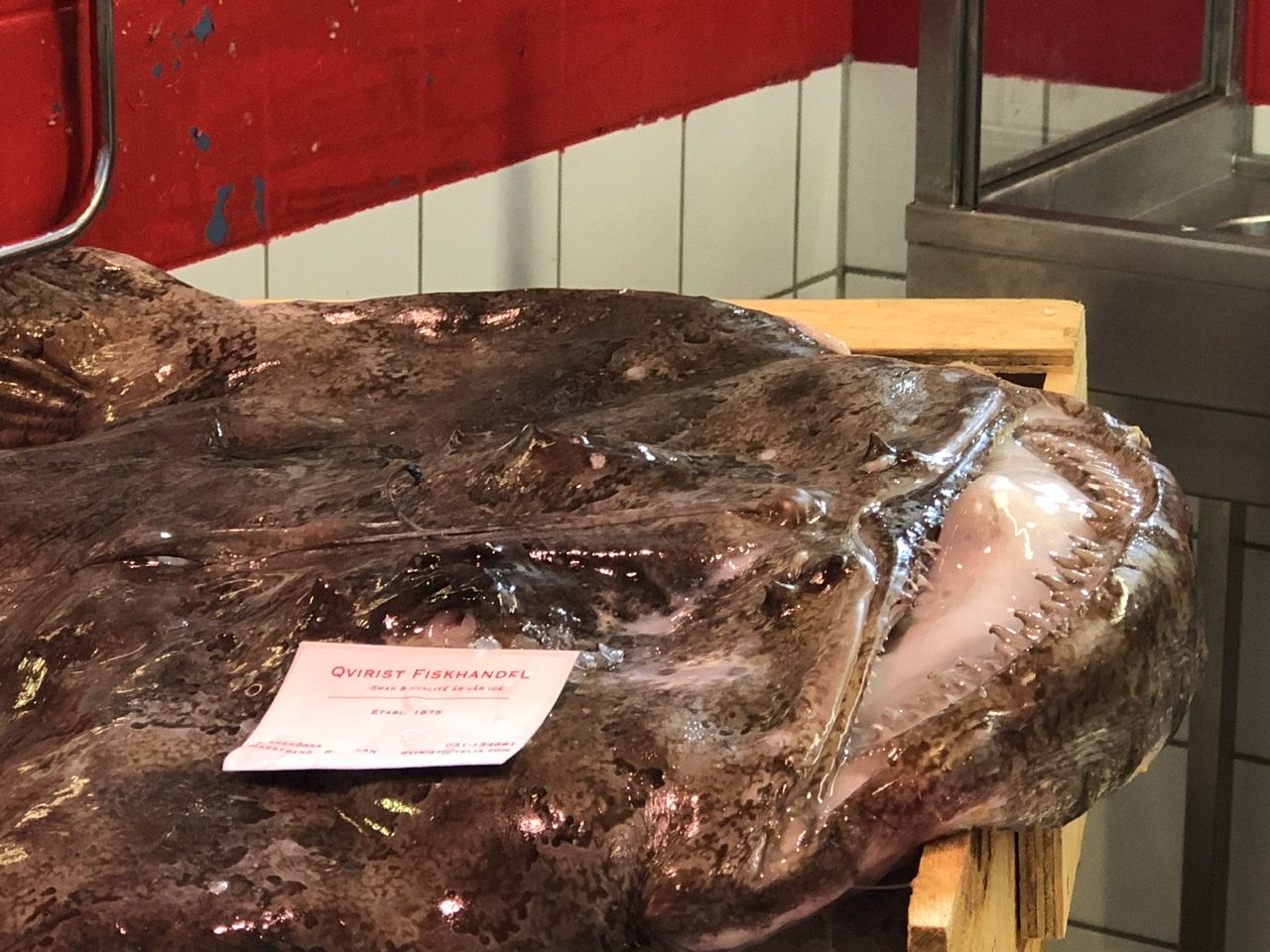
Especially when they show us creatures like this one at the Feskekörka Fish Market.
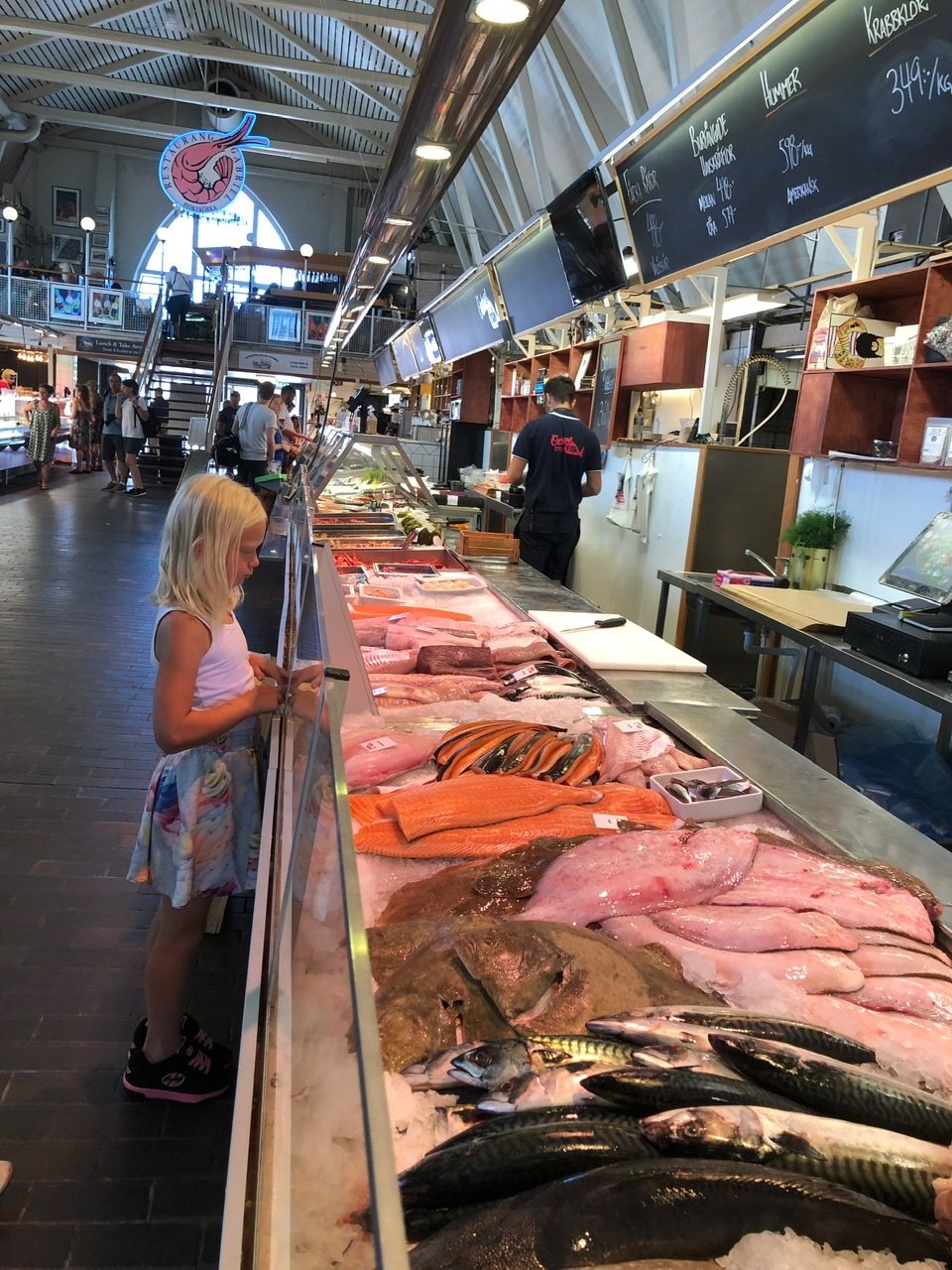
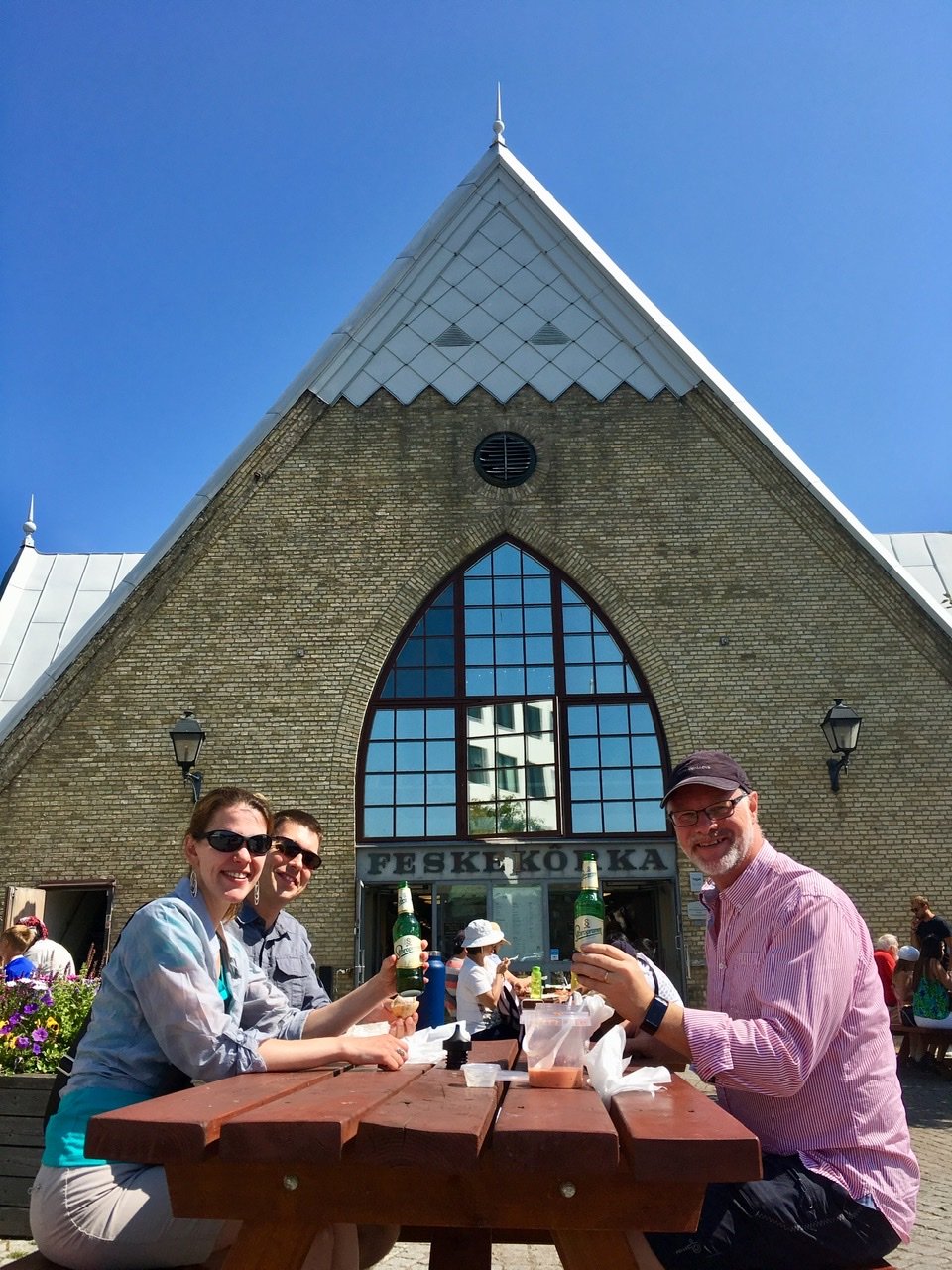
This market is a large, long-running market with a wide variety of seafood and prepared foods. We bought a delicious crab salad and a loaf of bread to dunk in it.

And for dessert, Tina and Anders force-fed us this cinnamon bun monstrosity, called a Hagabullar at a renowned Swedish establishment called Cafe Husaren. The buns are not only tasty, but also vegan! This was our first “fika” in Gothenburg. Fika is what Swedes (a bit obsessively) say when they want to have a food break…aka, snack or coffee.
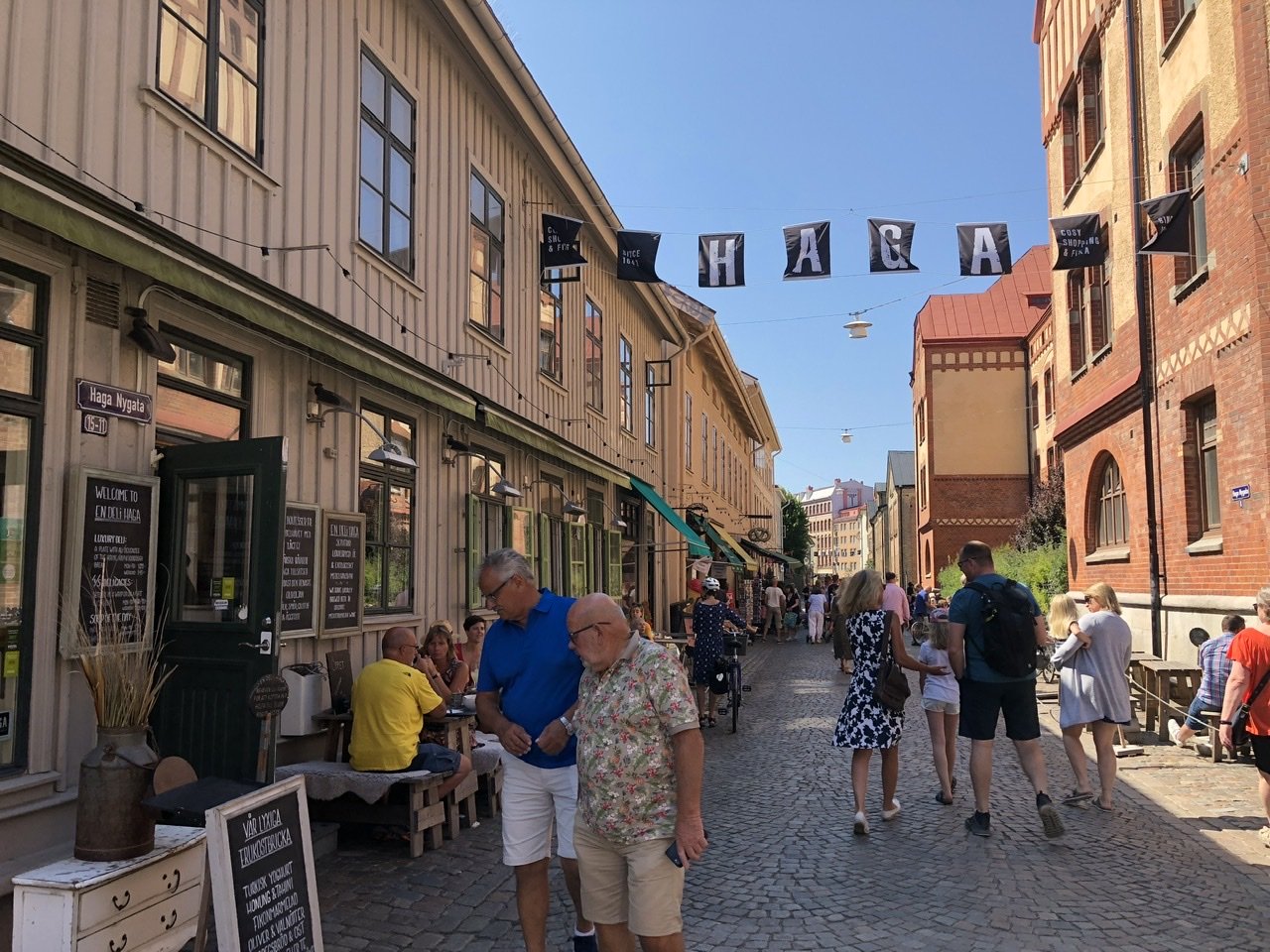

Or, a beer-on-the-street break! Or….another form of alcohol. Tina picked on Mandy for whipping out her hand sanitizer habitually. Little did we all know, she was just training for a certain pandemic that would arrive two years later.
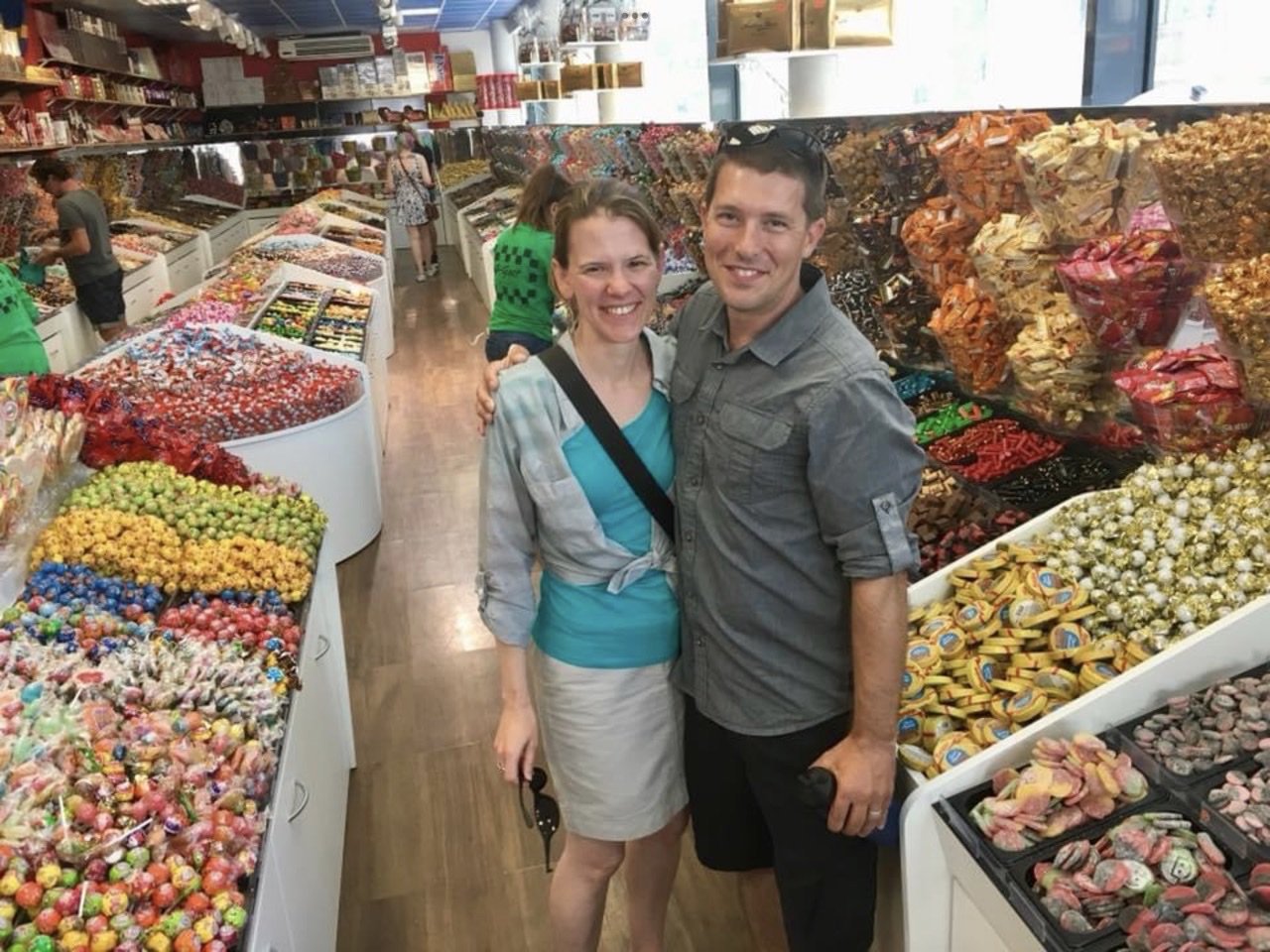
Getting a sugar high in a Swedish candy store. We giddily sampled these sweets, especially Mandy who has a guilty pleasure for all things gummy and sour and devoured the pile Tina had given her in nearly a day. They were all good except for a salty black licorice blob, which produced an electric shock to your taste buds, ew! Tiny, the one who likes the crayfish heads, not surprisingly liked these too. Hehe.
The Isle of Marstrand
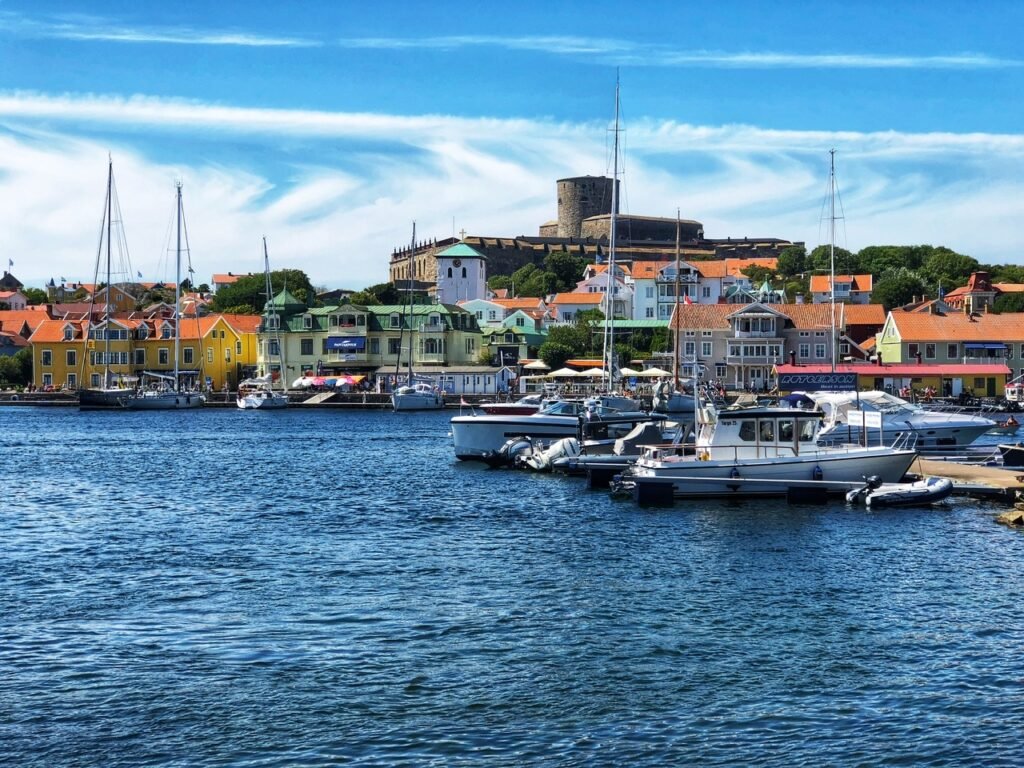
On another day, Tina and Anders took us to the charming Island of Marstrand, often said (by someone?) to be “the most beautiful place in Sweden.” This little car-free gem is a haven for sailing and swimming, with quaint and trendy neighborhoods.
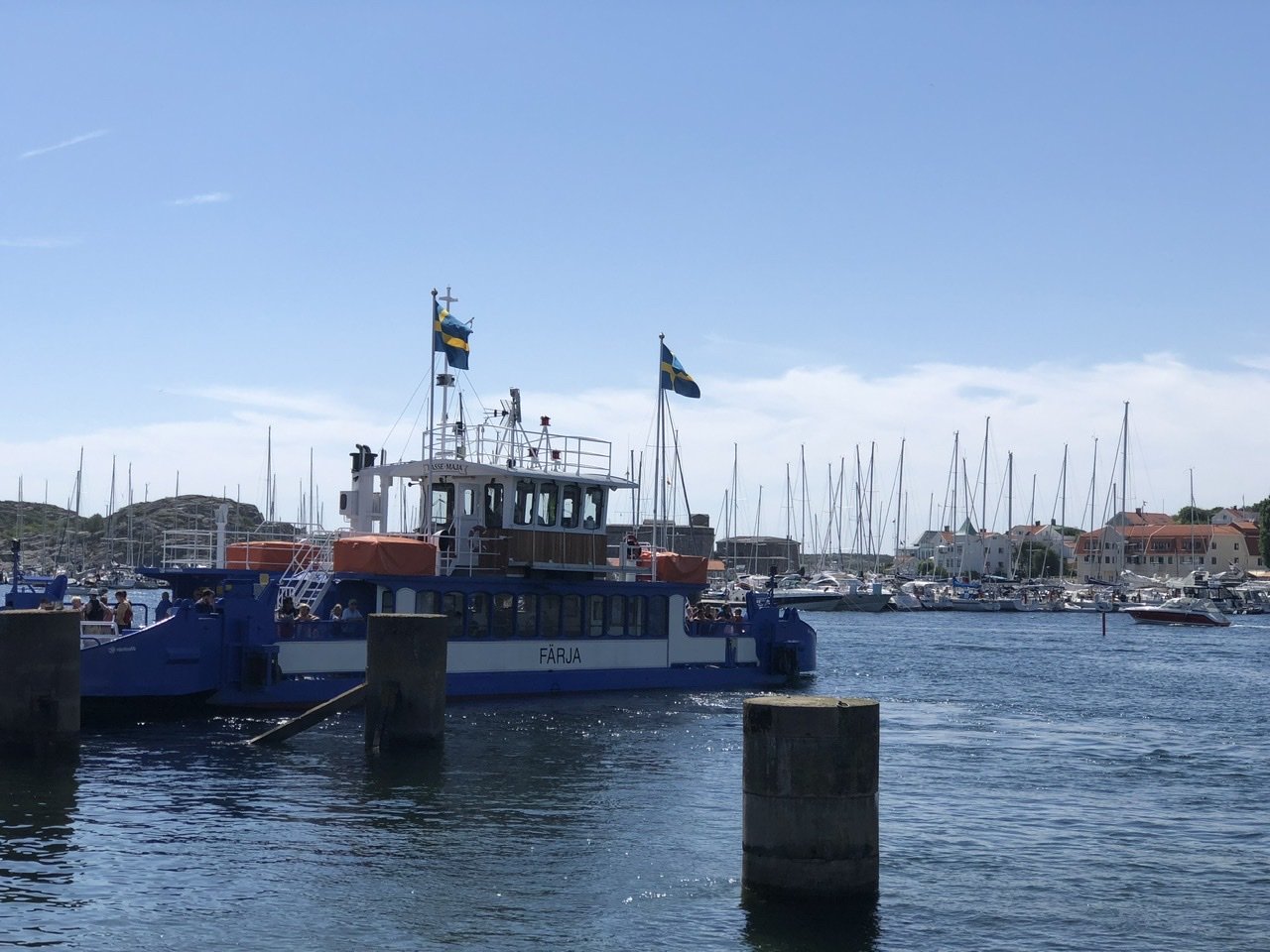
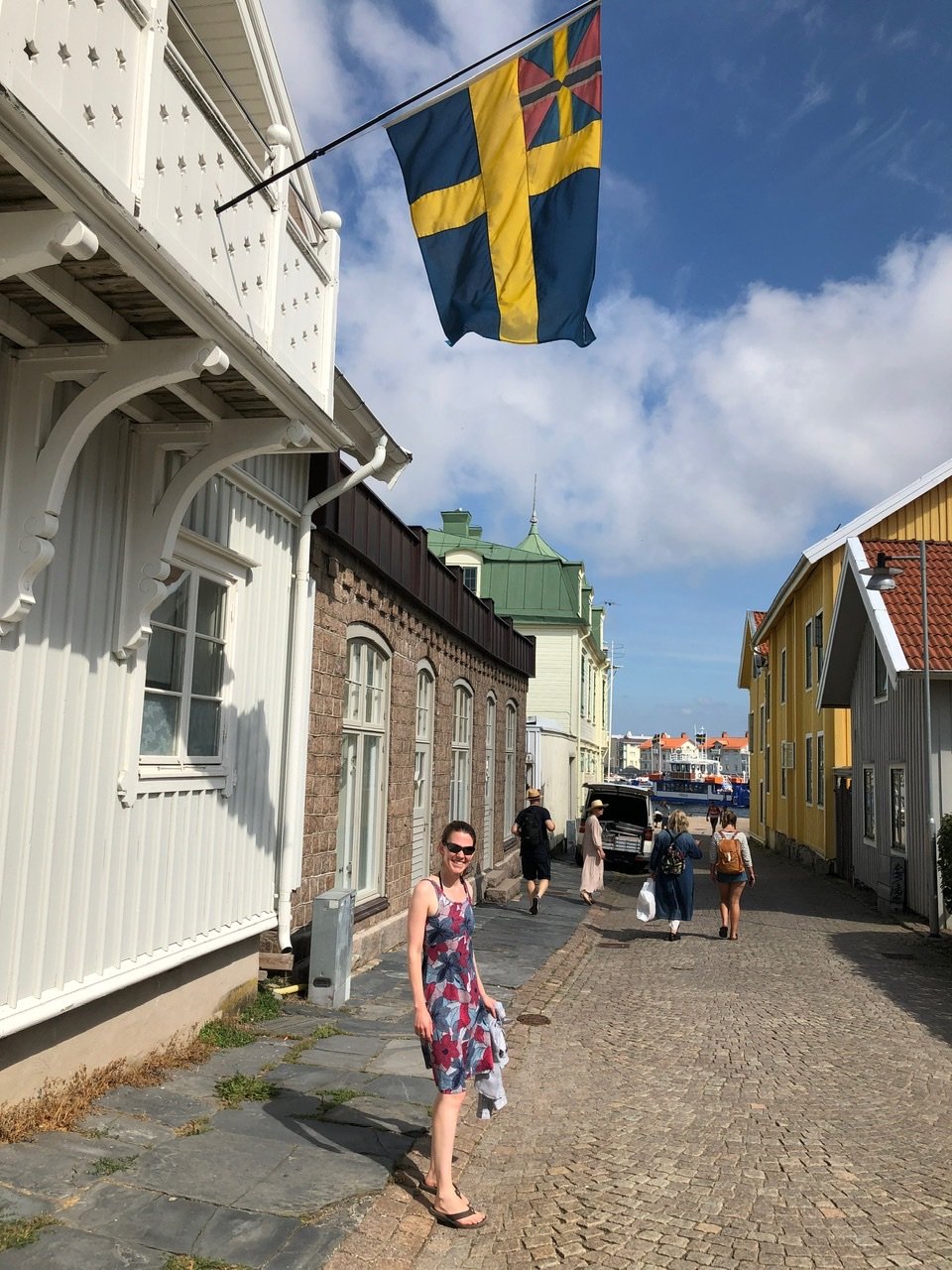
To get there, we took a quick ferry ride for 60 Swedish Krona or $7.13/two tickets.

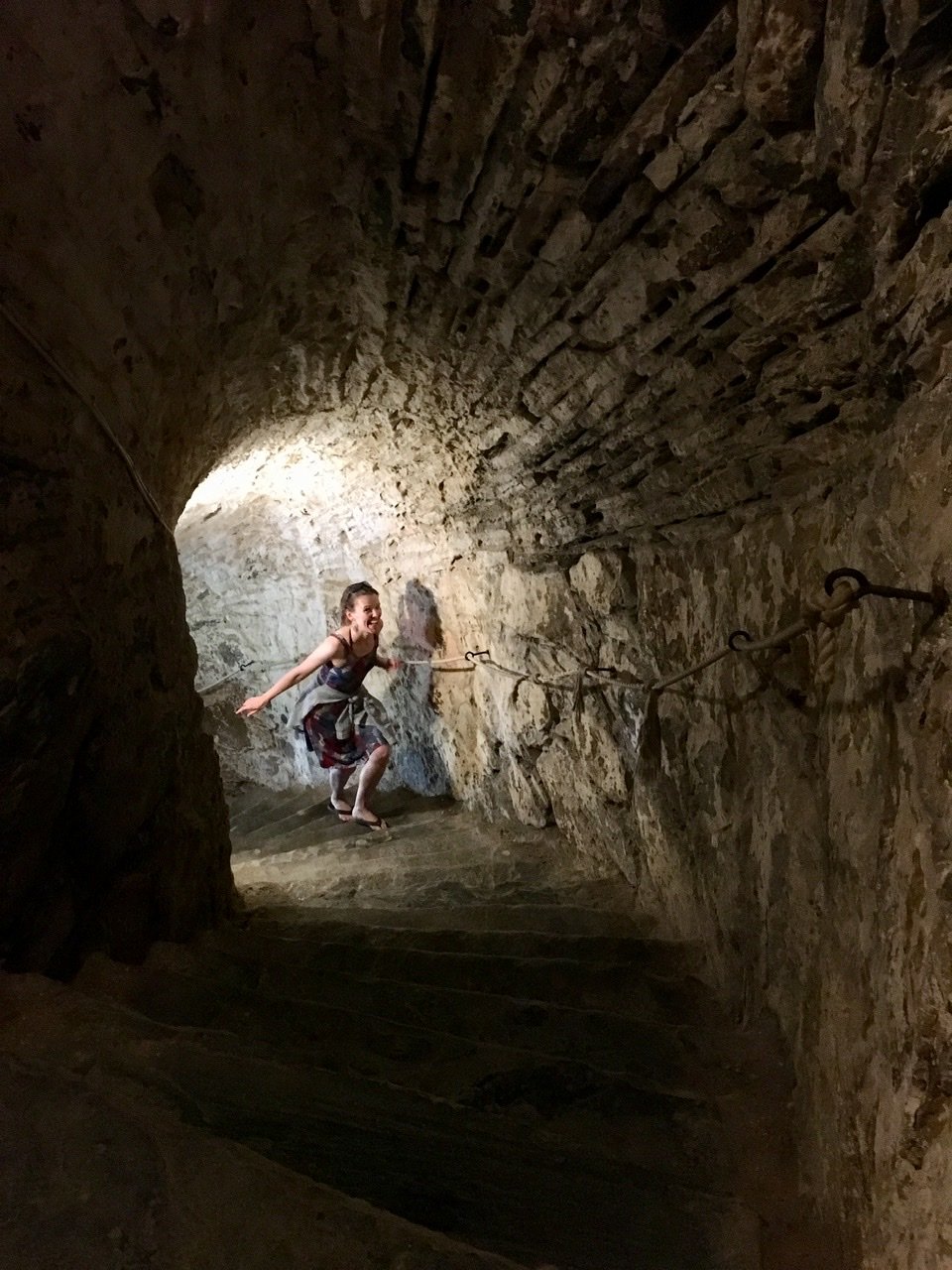

We first visited the Carlstens Fortress, a 17th Century stone fortress built on the orders of King Carl X of Sweden in 1658 to protect the island from invaders. Now that we’re in peaceful times, it’s Marstrand’s star attraction for guided tours, themed dinners, historical reenactments, and a hefty ticket price of 95 Swedish Krona a ticket ($11.25) (2018).

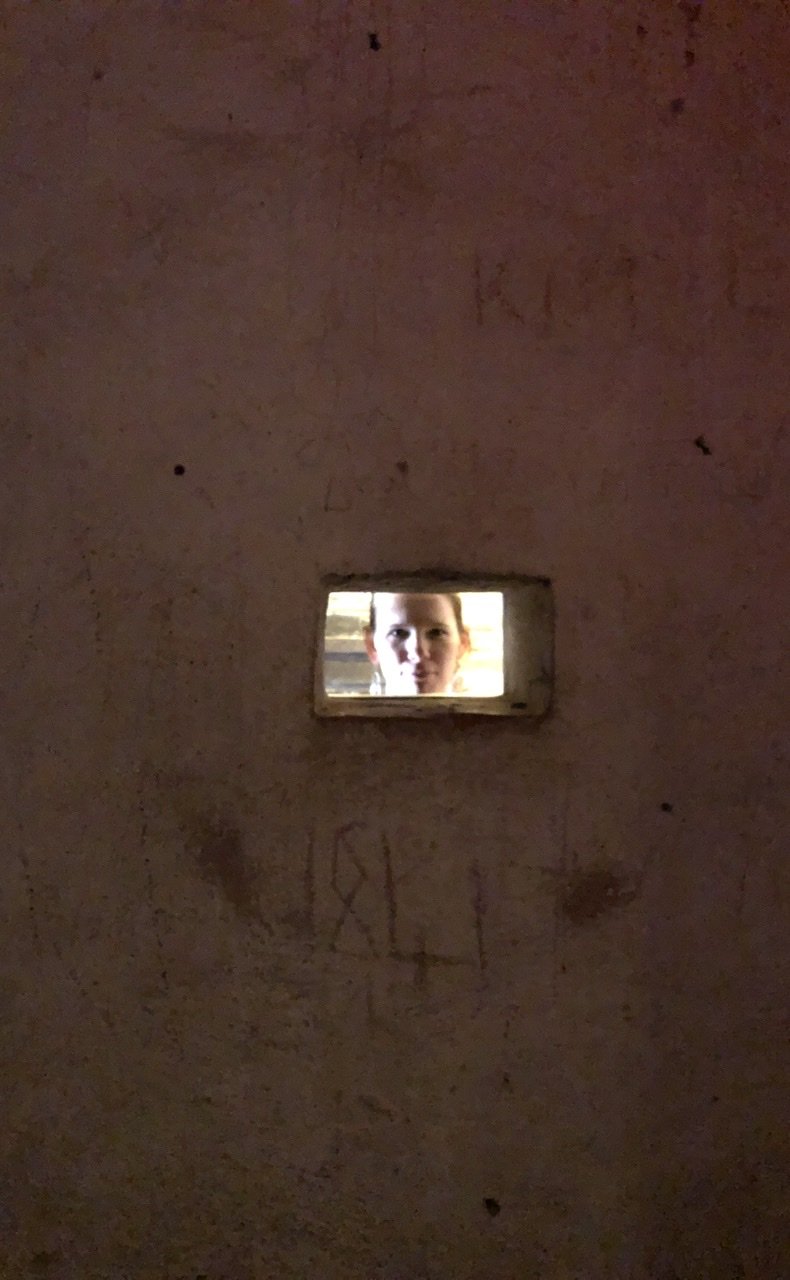
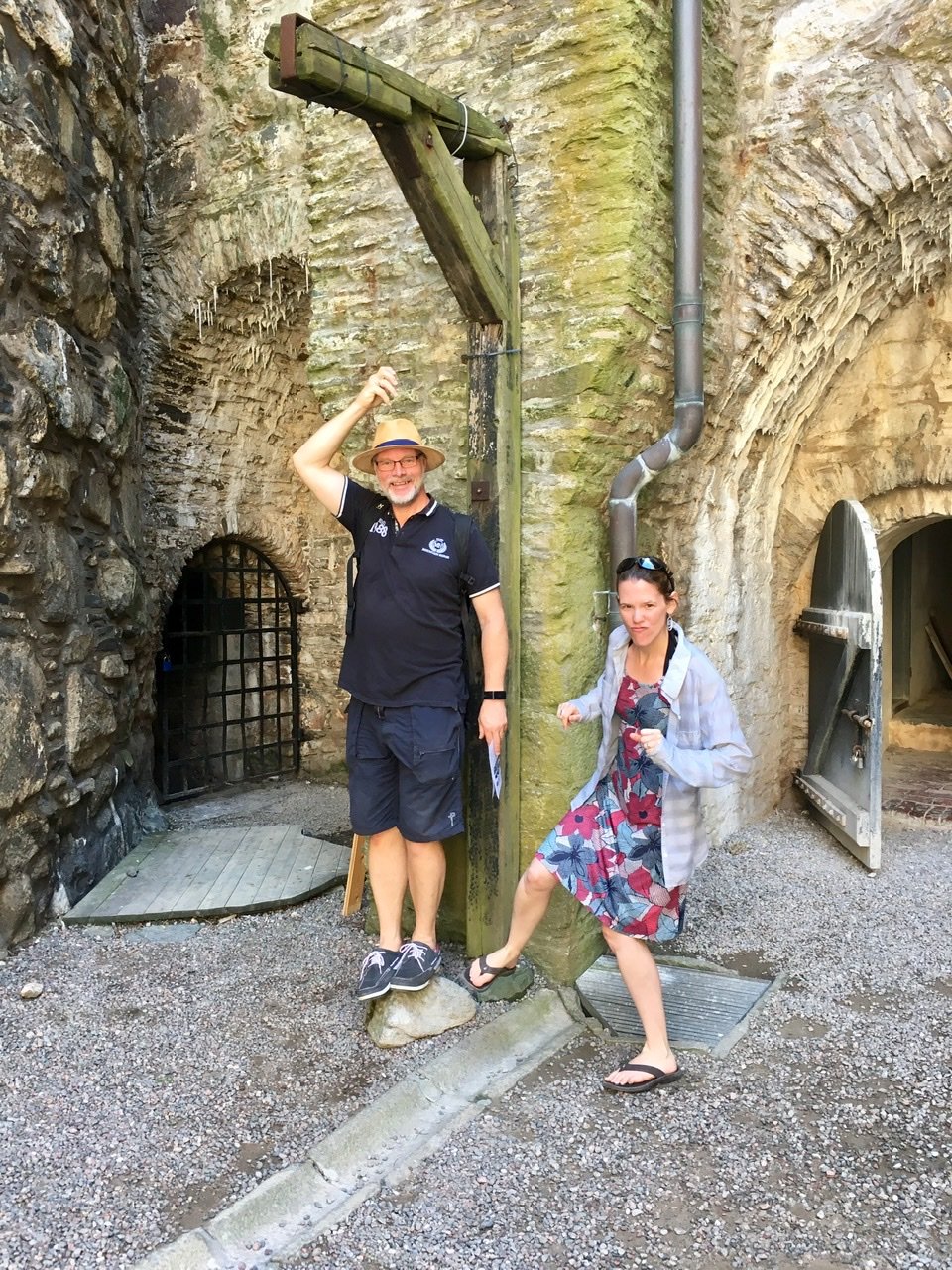
At least for the ticket price, it included some very comfortable beds, and some serious entertainment value.
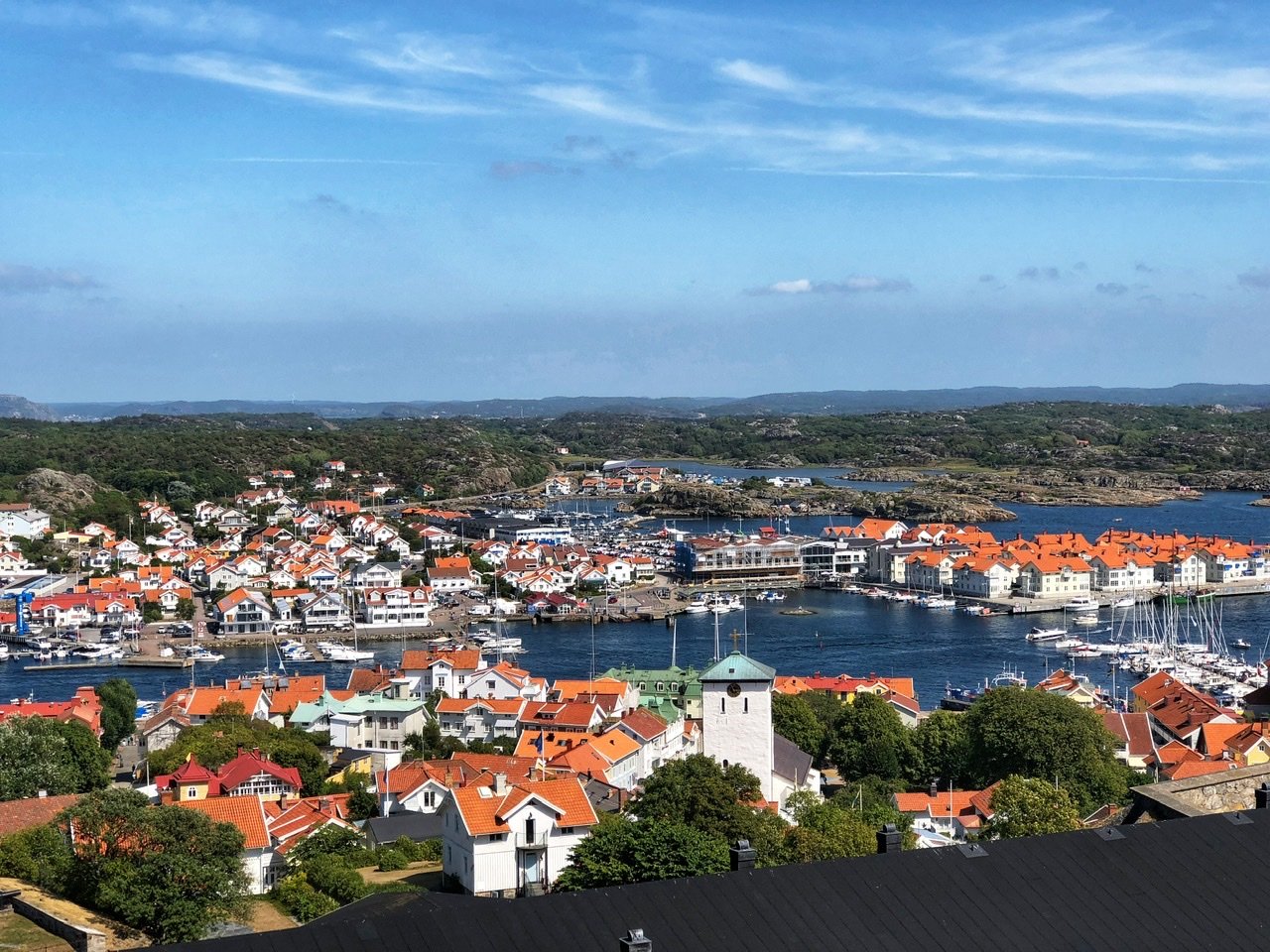
The view of pretty ‘lil Marstrand from the fortress walls.
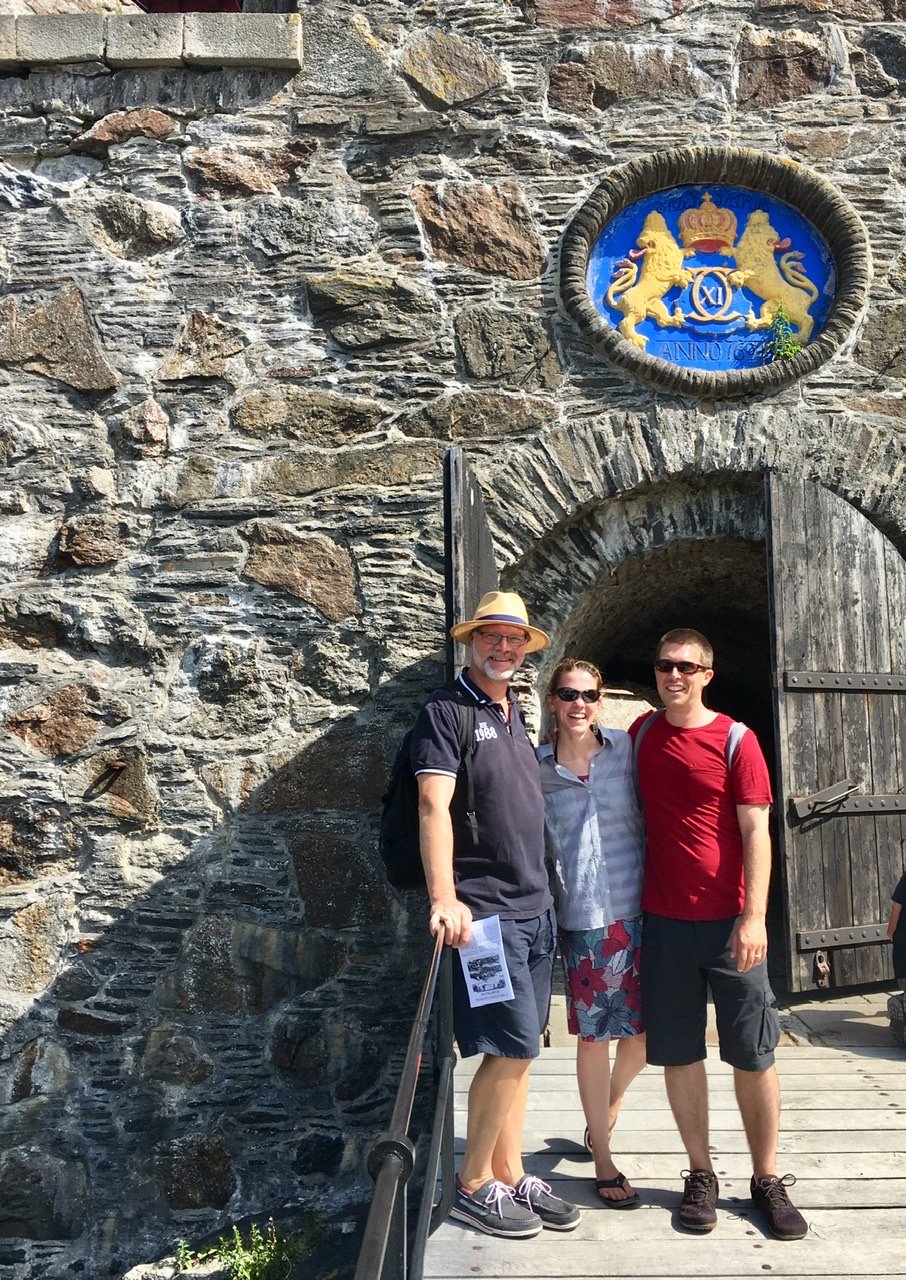
Practically royalty.
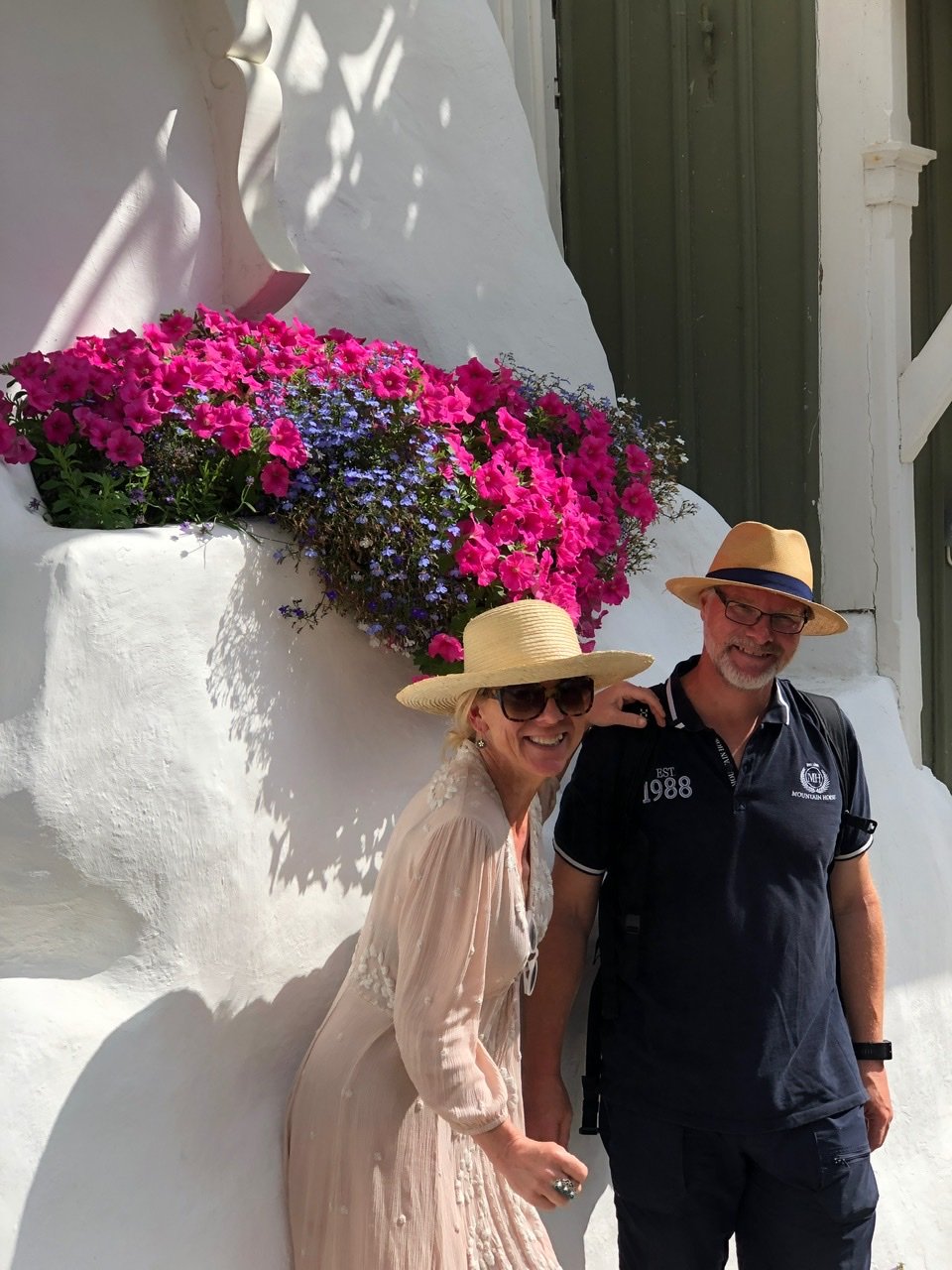

Our gregarious tour guides. And….Greg.
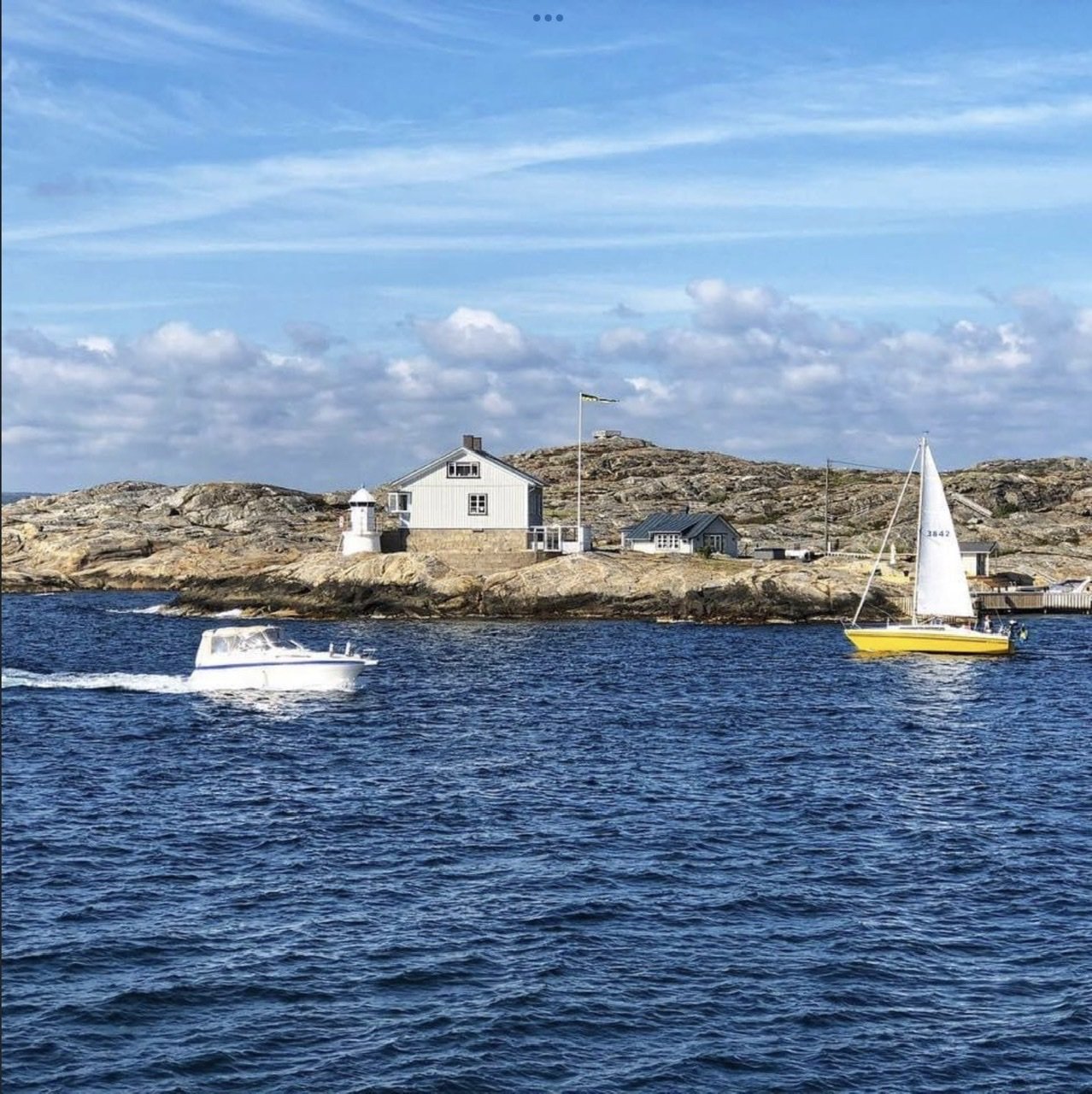
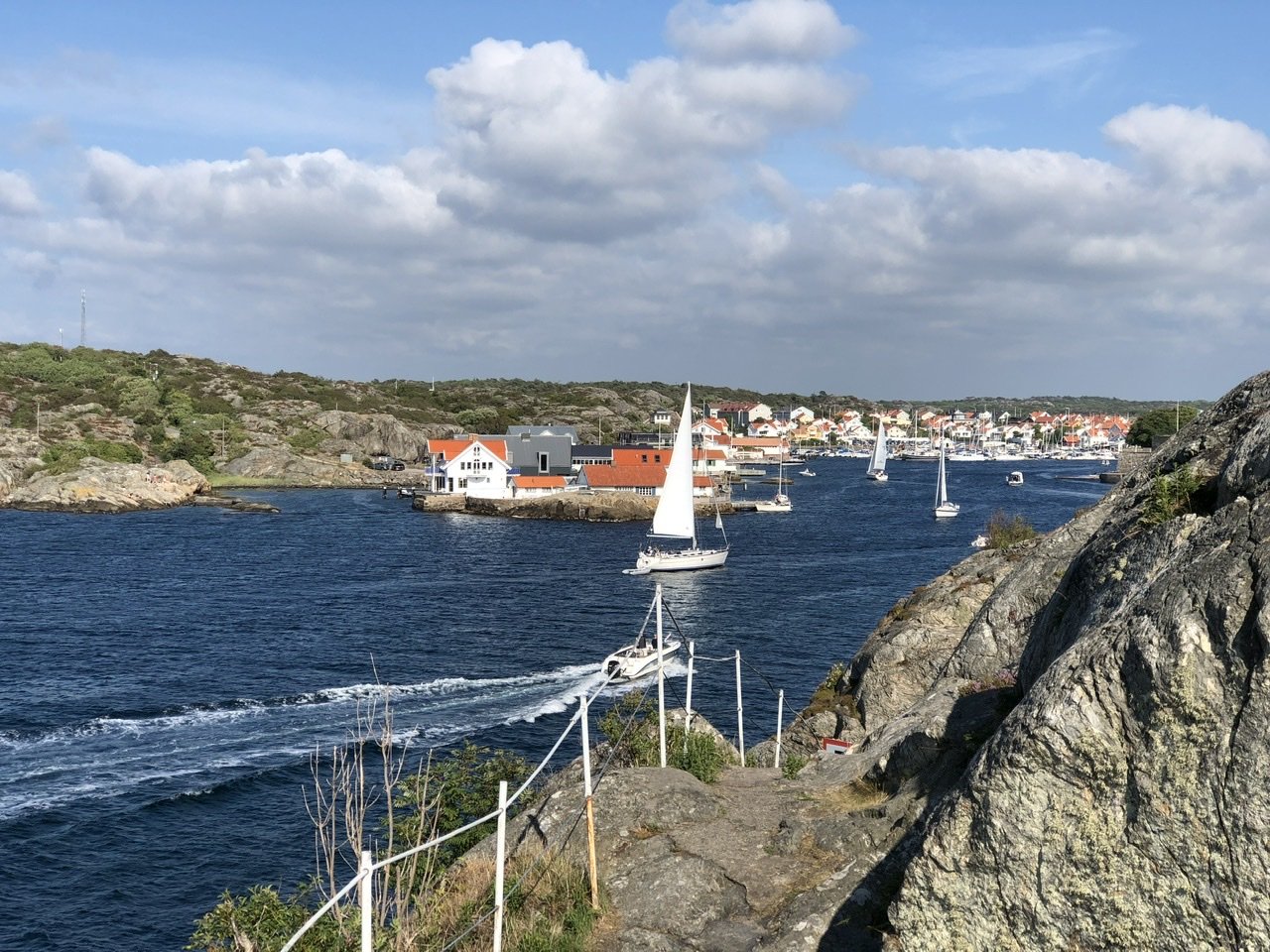
It couldn’t have been more idyllically Swedish.

The public art is also one of a kind. Fortunately, we don’t feel crippled by our backpack houses like many people feel about their mortgages and everything that comes with home ownership.
Kayaking on Ömmern
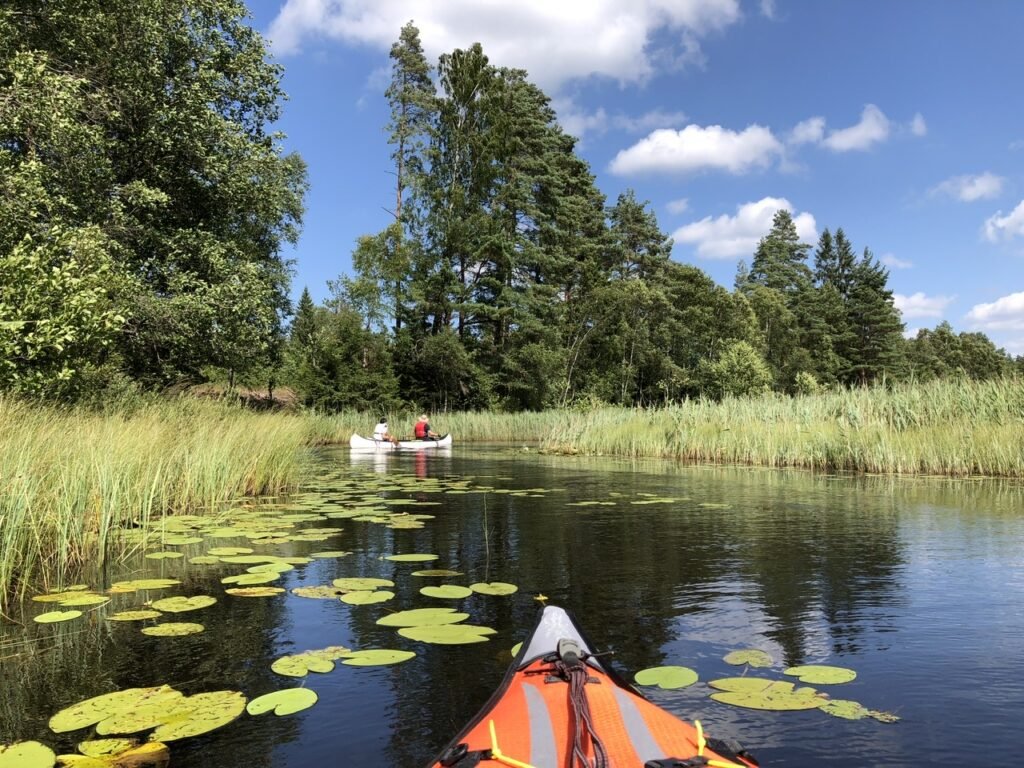
Anders is a big outdoor guy, so it suited us fantastically when he offered to take us kayaking on a nearby lake, alongside Yosue, his daughter’s boyfriend.
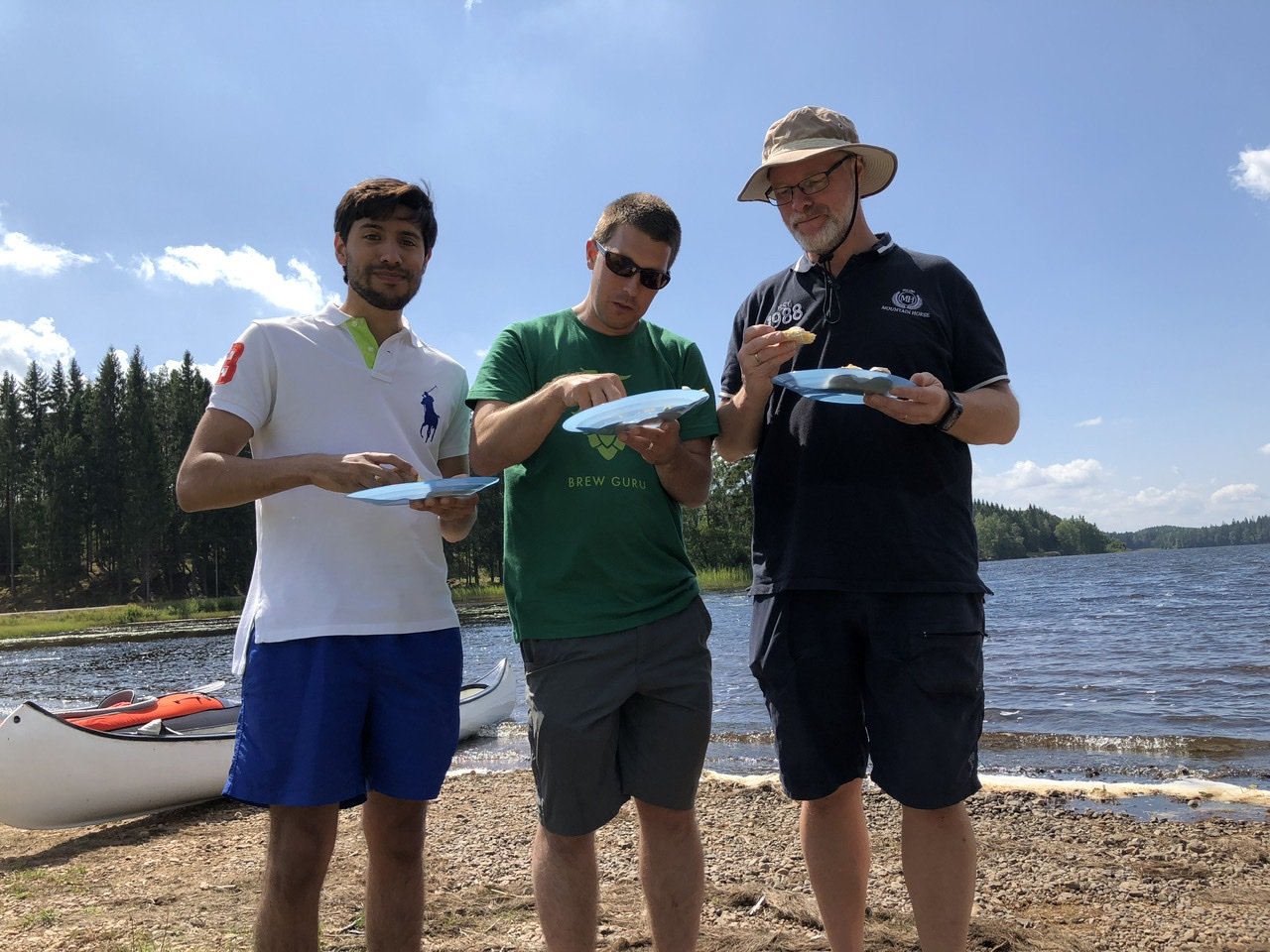
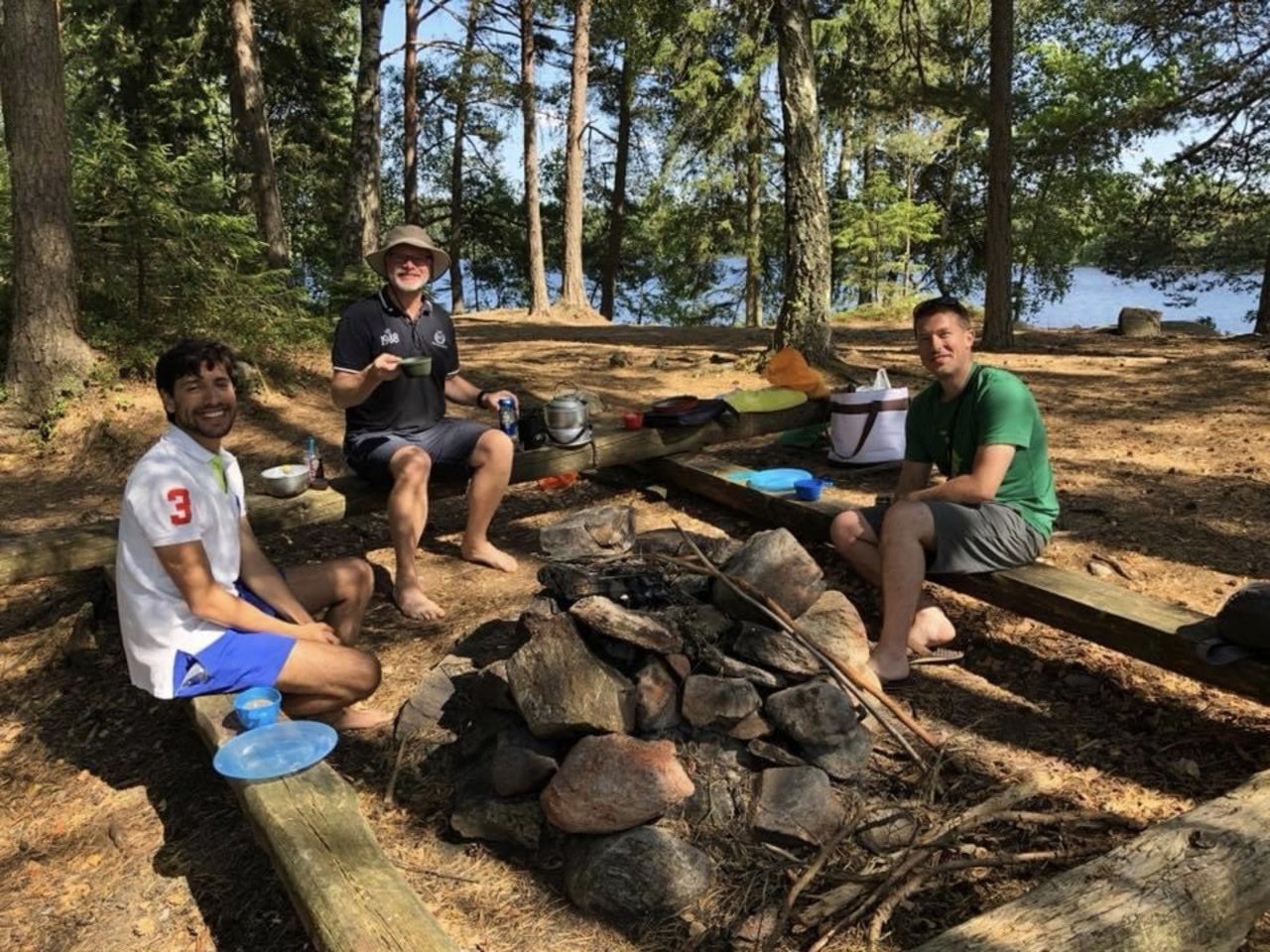
And of course, as with any Swedish outing, there will be at least one fika, which Tina had lovingly packed for us. Maybe even a bonus one on a “remote” island. The second one included Swedish pancakes and coffee!! We were very impressed…our accomplished guide Anders could definitely start a business!

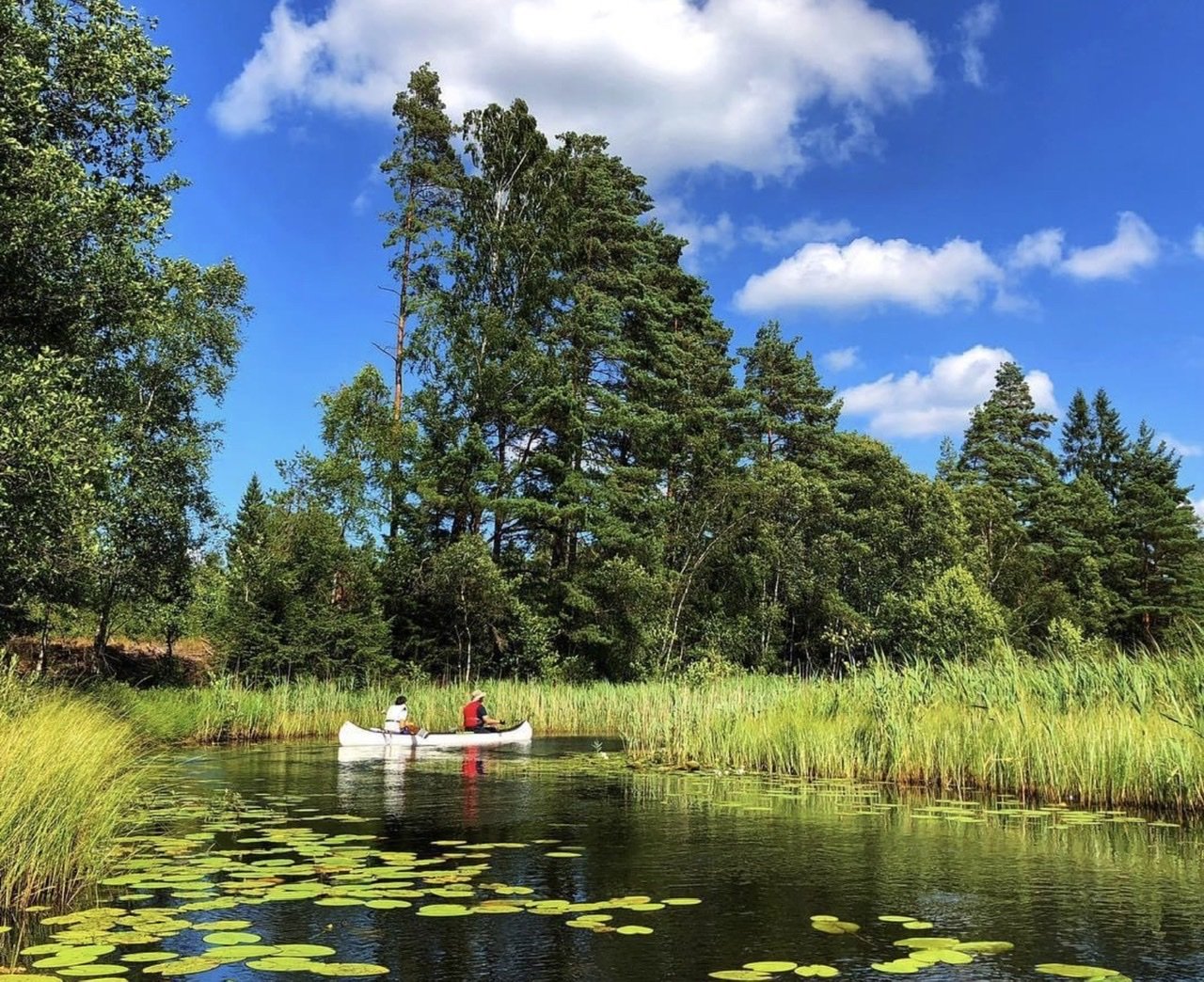
It was undoubtedly one of our favorite experiences! The water was completely serene, and the day couldn’t have been more perfect. What a perfect Swedish summer.

Speaking of Swedish summer, because it was mid-July, we got there in time to see the remnants of the Maypoles, leftover from Midsummer’s Eve on June 21. A Swedish maypole is bedecked in flowers and about 20 feet tall with two large loops on the side. Many say it originated as a symbol of fertility, while others believe it represents a link between the underworld, earth and the heavens. They were used as early as the 1500’s.
Around Kullavik

Near the fishing wharf of Kullavik, Mandy and Anders take a peek at the underworld.

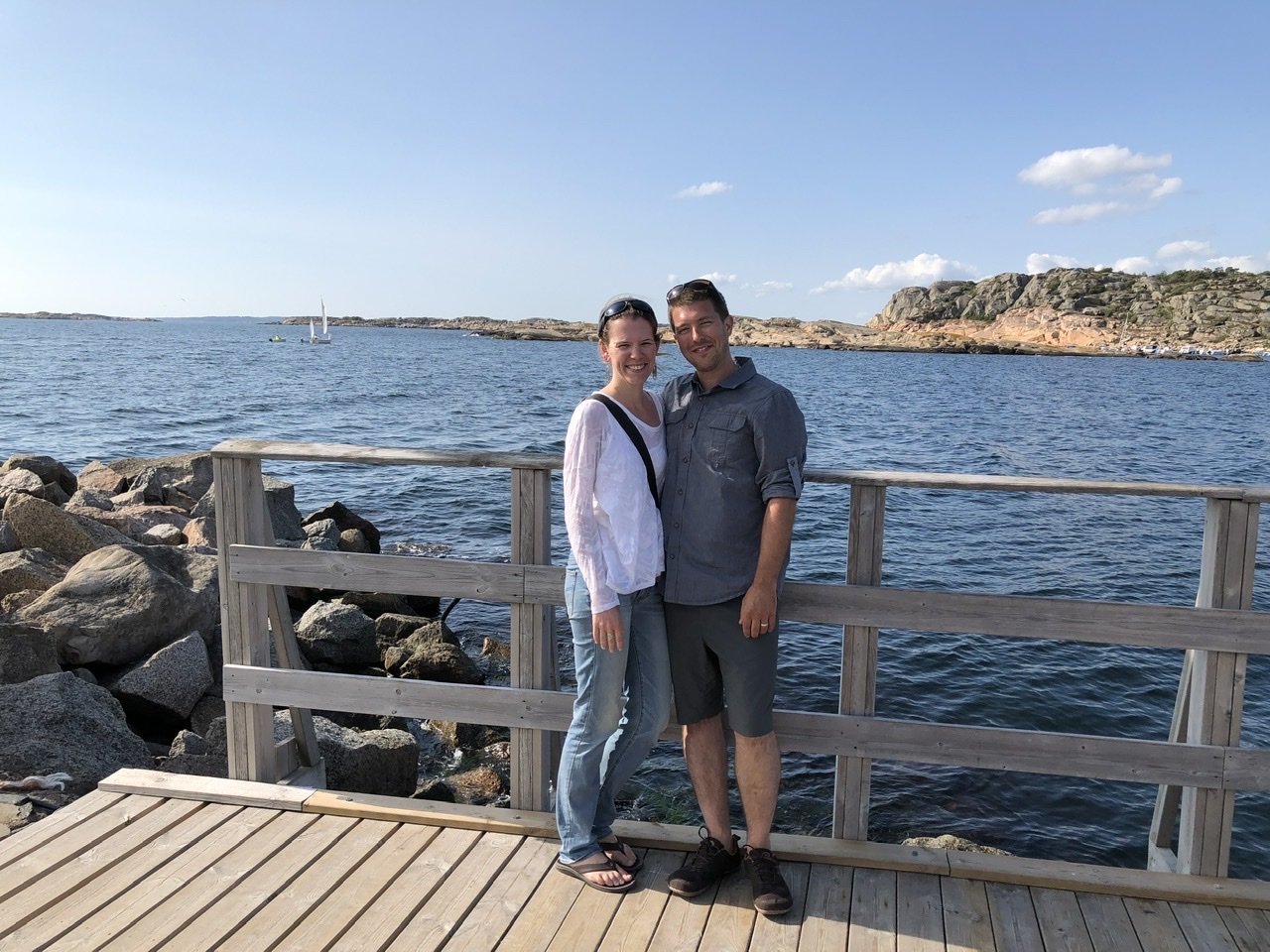
Pre-dinner photos in Kullavik.
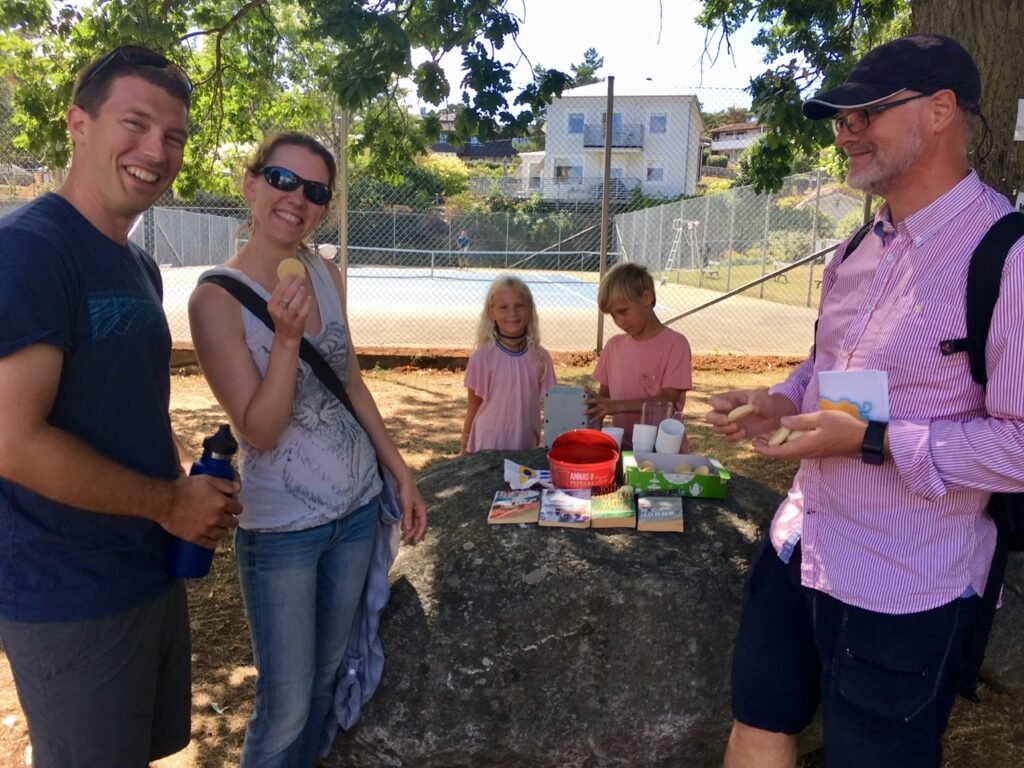
Young entrepreneurs selling cookies and lemonade.
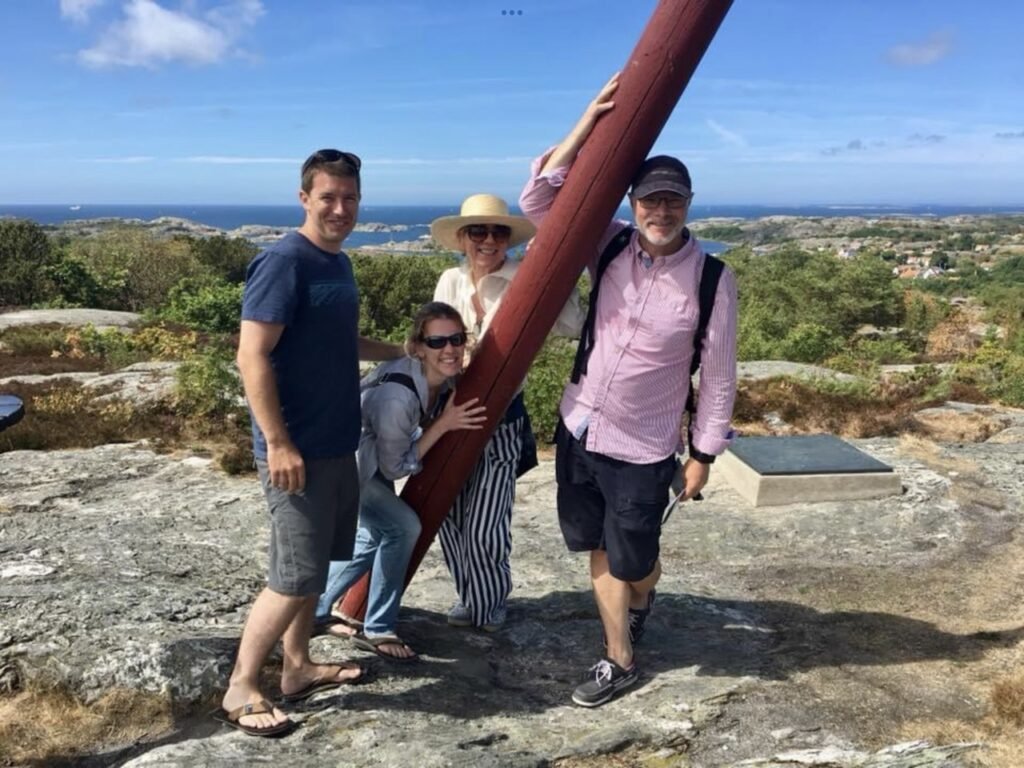
Atop a lookout on the high point of Styrsö island.
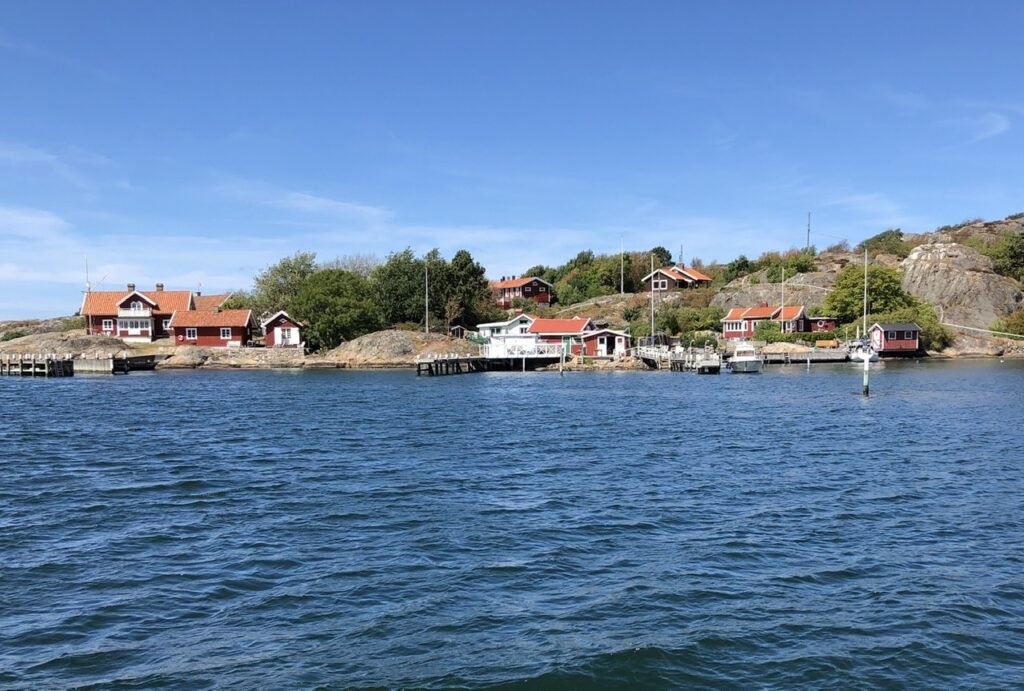
We took a ferry out to Brännö to treat the Eks to lunch on our last day.
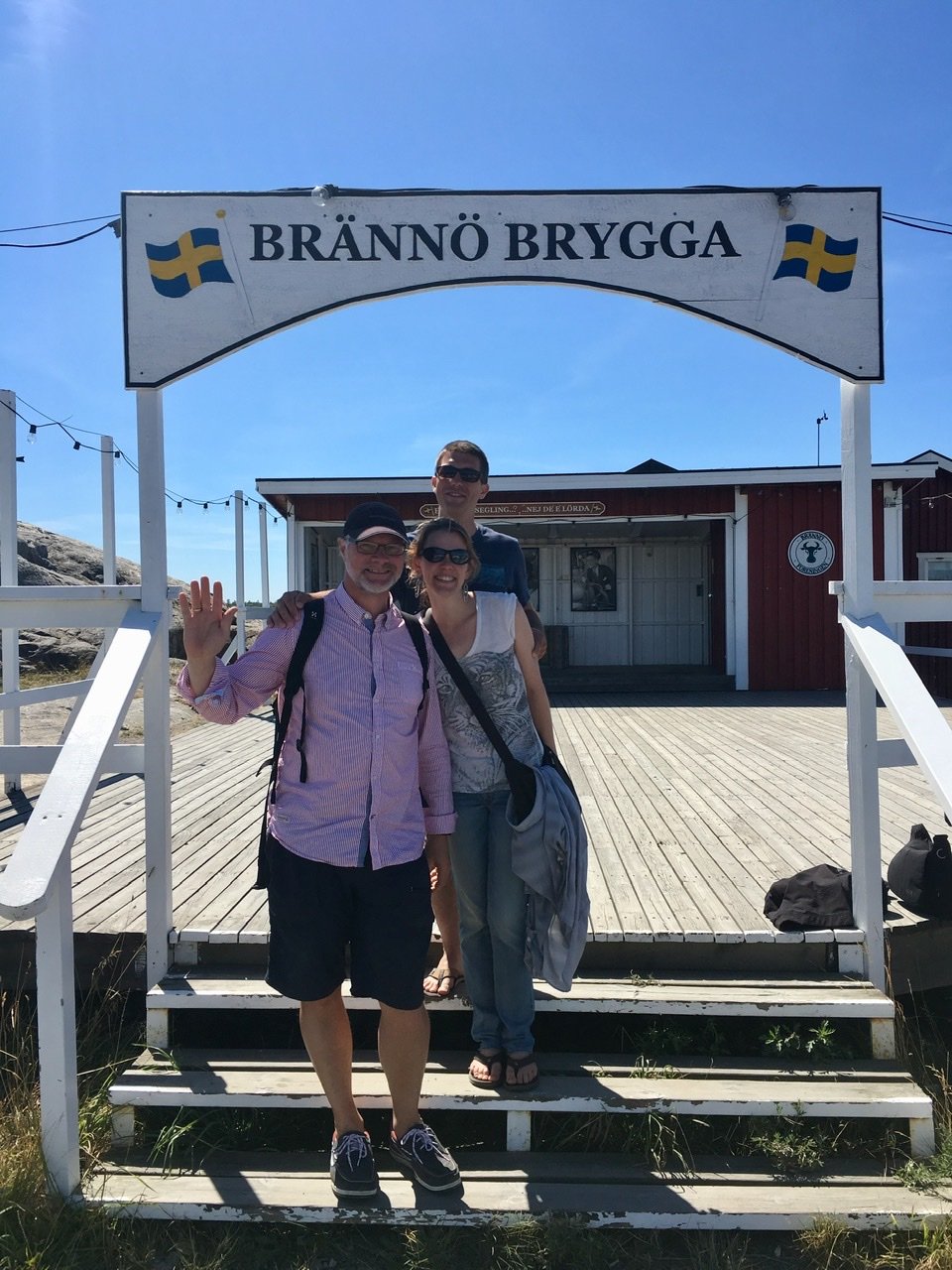
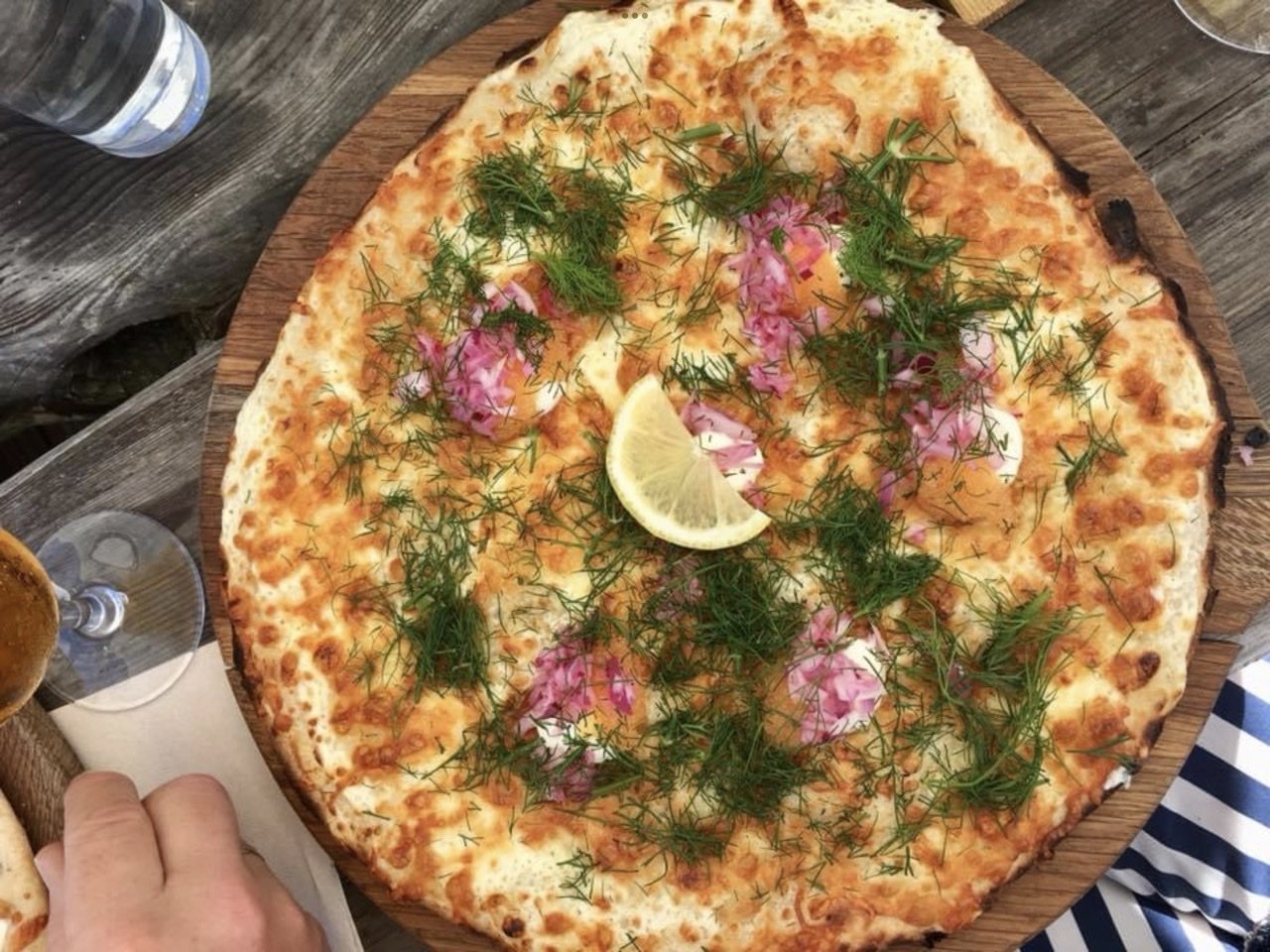
Not a typical Swedish pizza, according to Tina. But the drops of cream, caviar and dill felt pretty Swedish to us. So delicious!
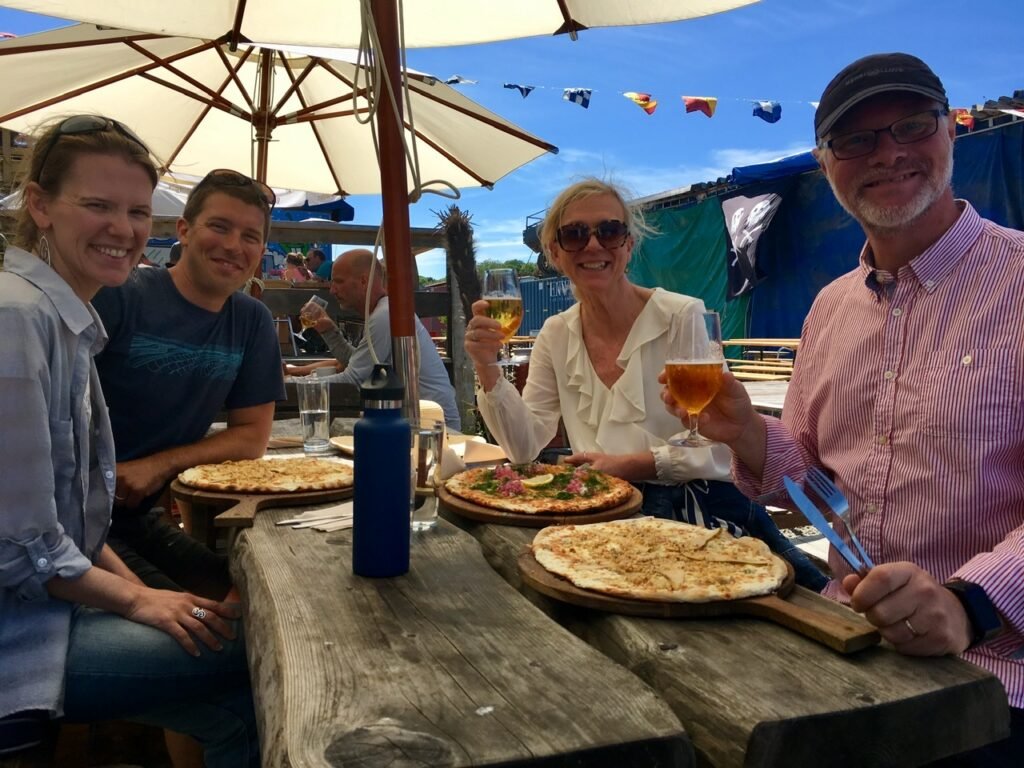
It would be hard to leave these two! We had such a lovely time with them.
Fotevikens Museum

From Kullavik, we took a bus down to southern Sweden to get our Viking on. This unique open-air living village from the late Viking Era is one of a kind, and is an easy day trip from Malmo. This museum is the only attempt in Scandinavia to recreate an inhabited settlement from the late Viking period around the year 1100. The settlement includes 24 reconstructed buildings and is surrounded by a high rampart. In the village you can find a blacksmith, a merchant’s house, and a place of execution. Cheery!

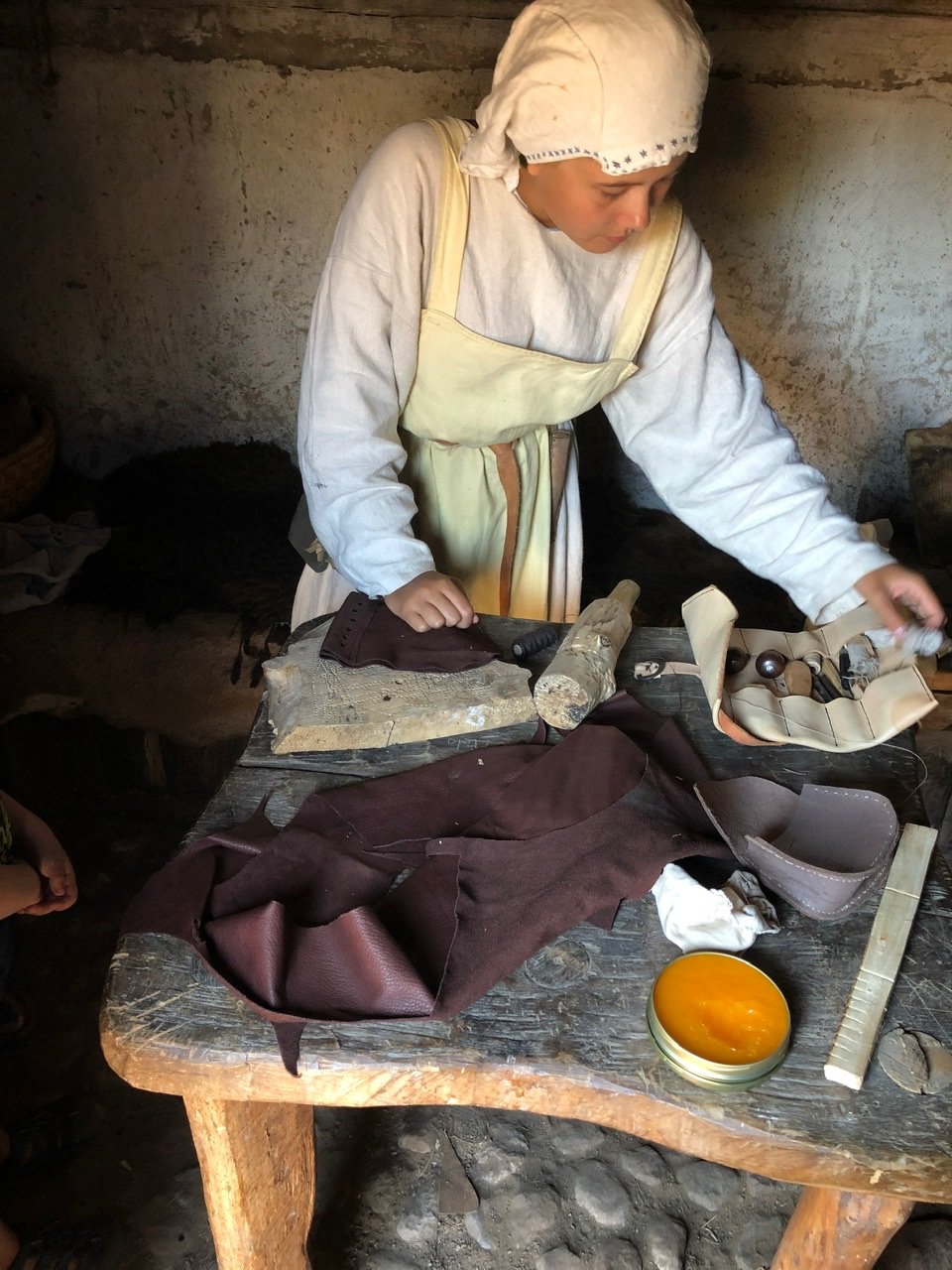
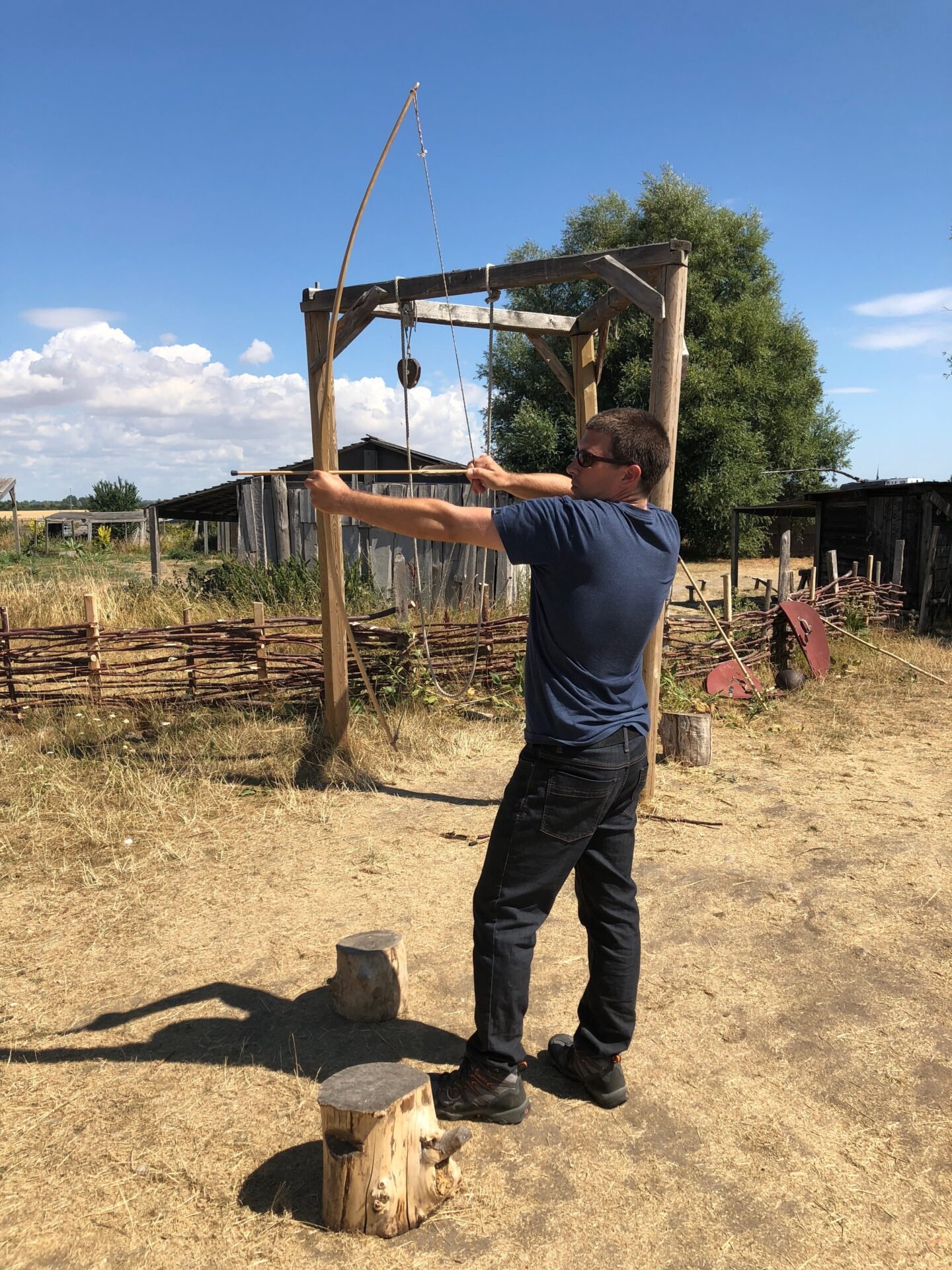
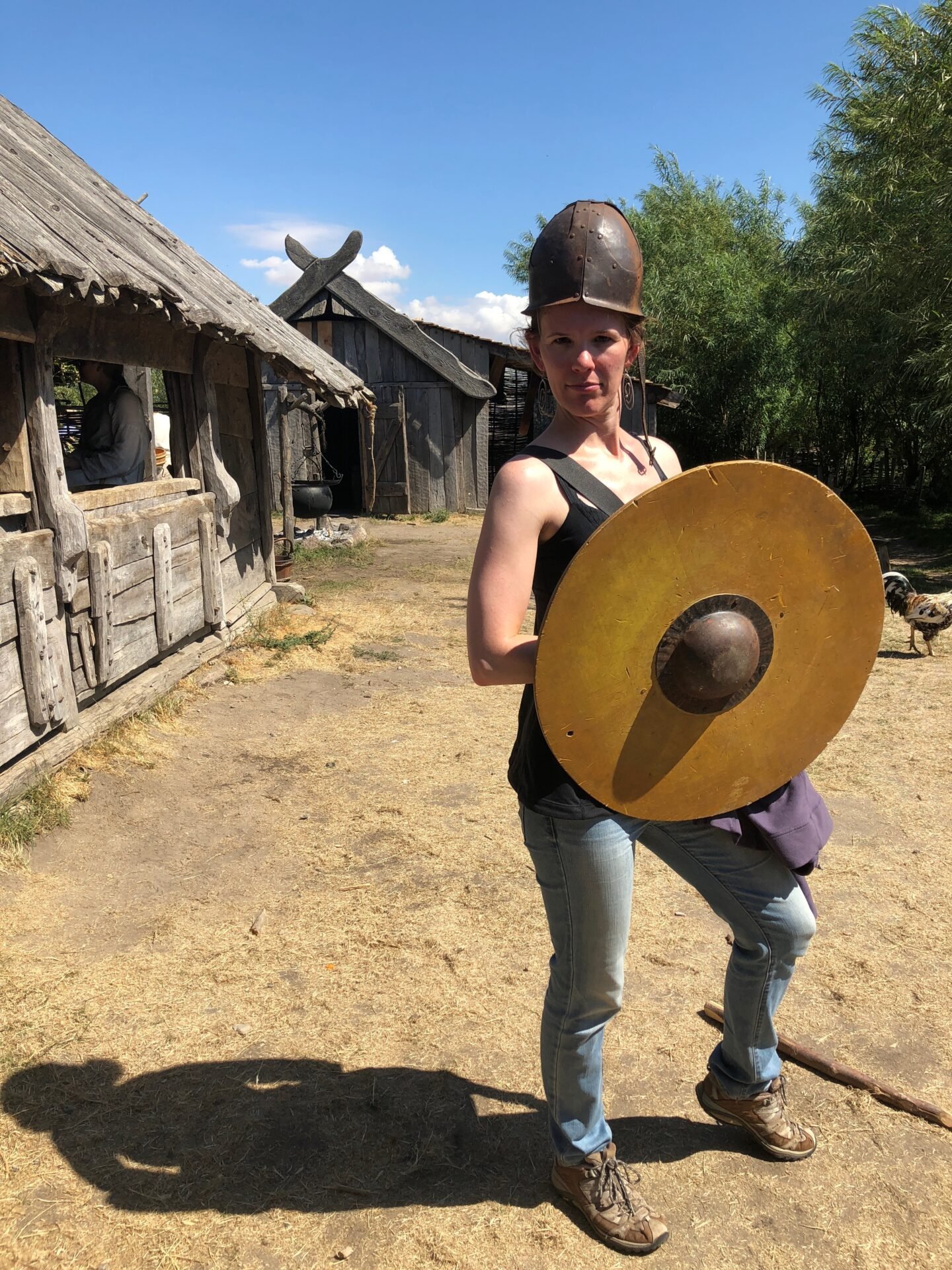
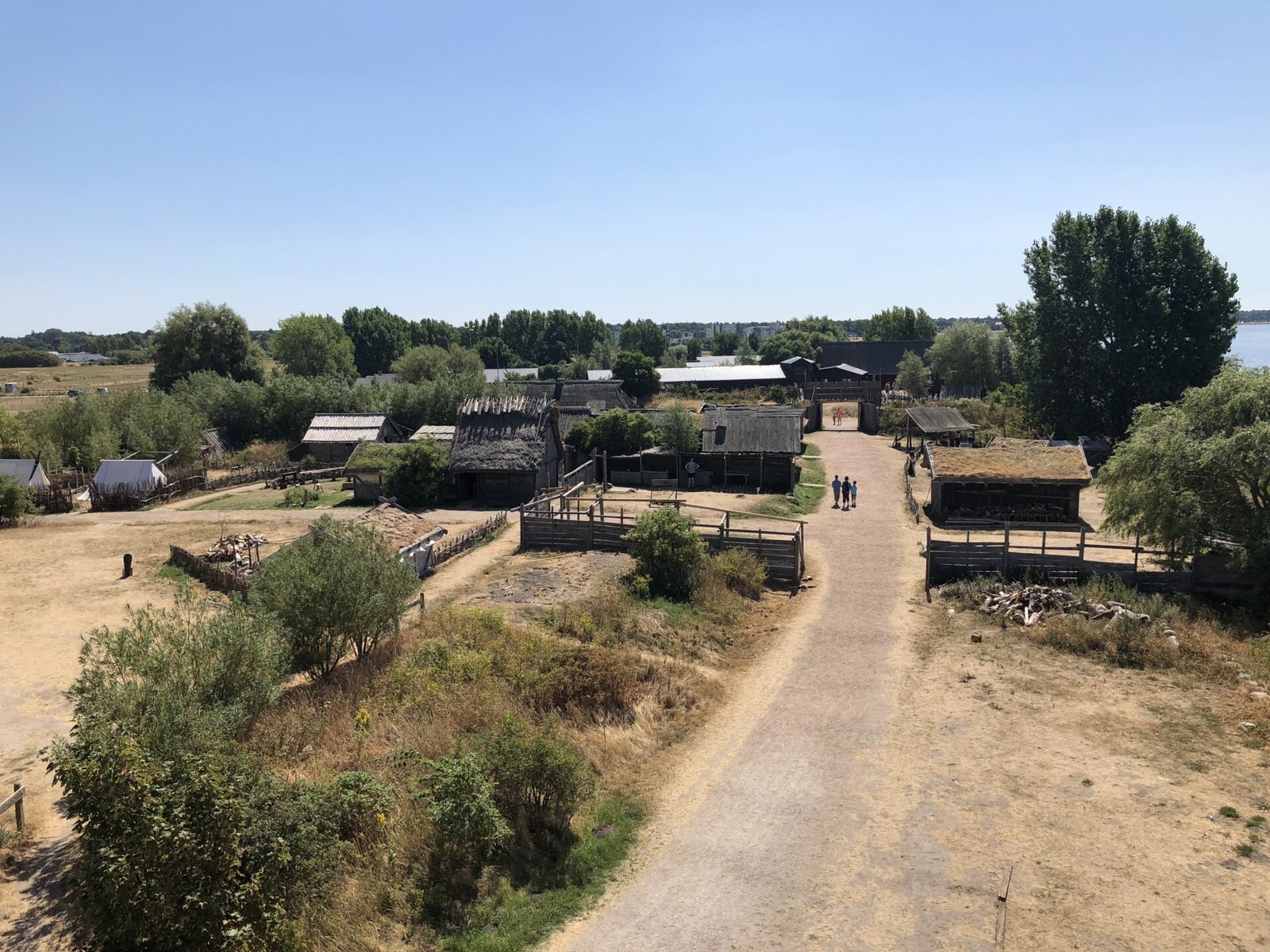
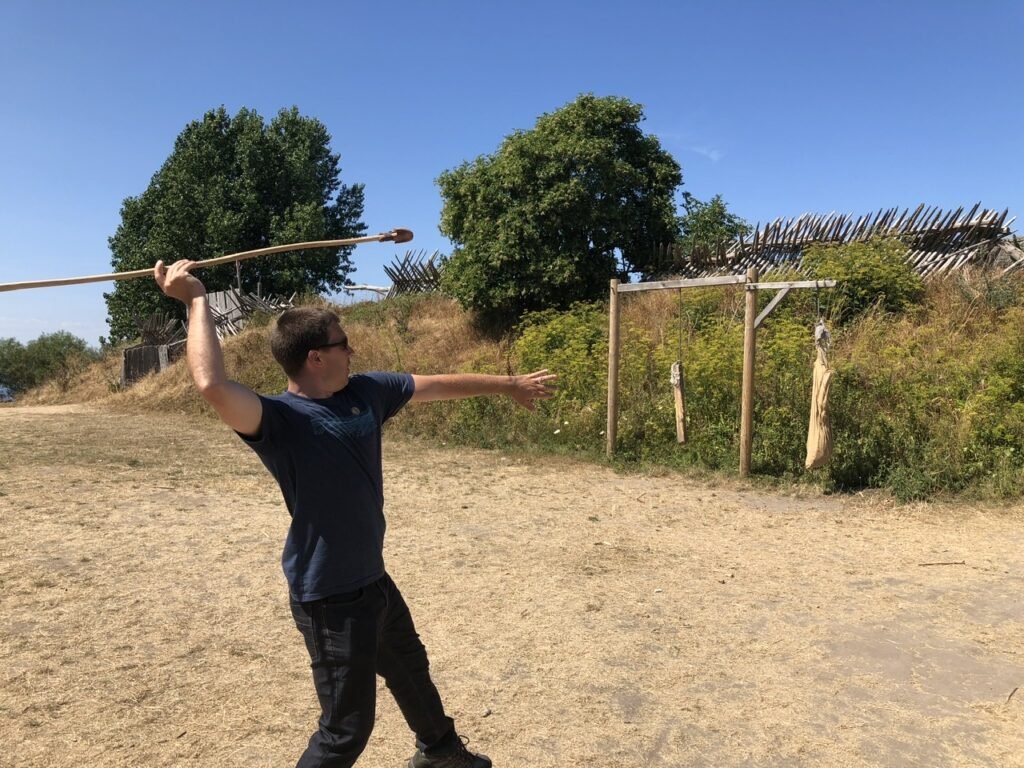
We visited on a beautiful day and it was virtually empty! It was so fun to peek in all the structures and learn about life in a developing village. Yes, Mandy looks hard core… For the record, the Vikings did not wear horns on their hats. This was not made popular until the 1830’s when an opera singer wore one to enhance his stage appeal!
It costs a whopping 130 Swedish Krona or about $11.50/each. Wow. It’s amazing how expensive Sweden is compared to most places we visit.
Trying to get back on budget, Greg works on catching dinner.
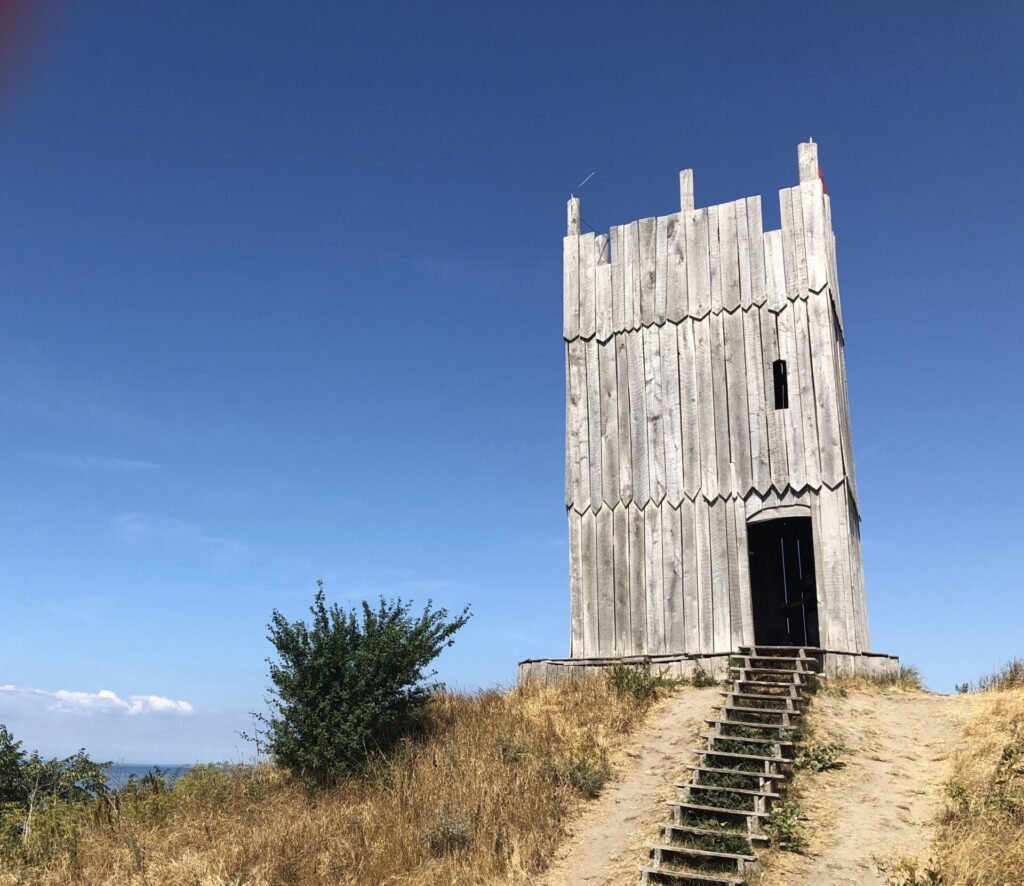
The guard tower, making sure Greg stays out of trouble.

